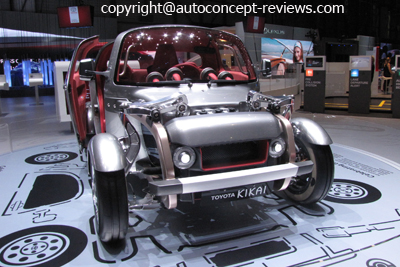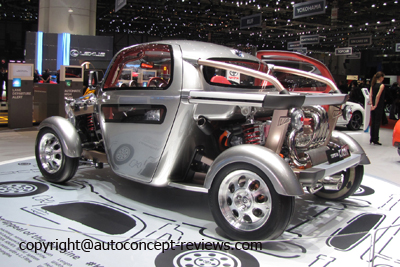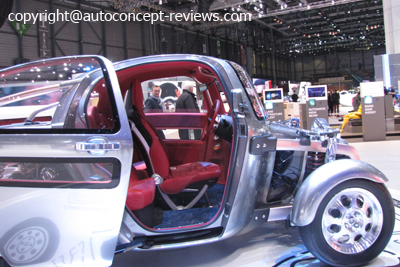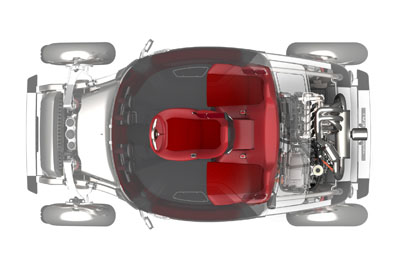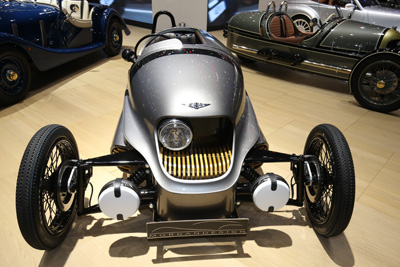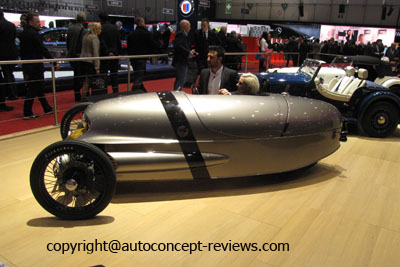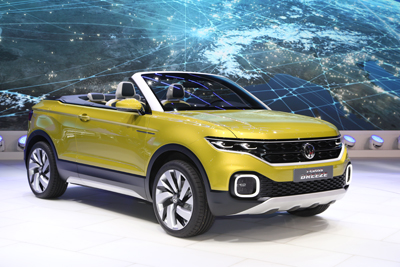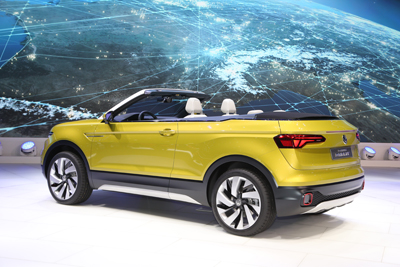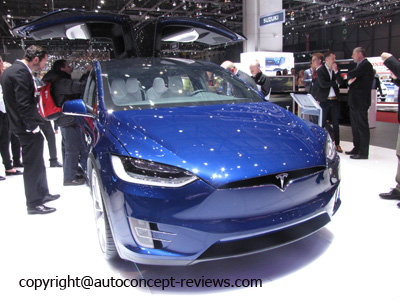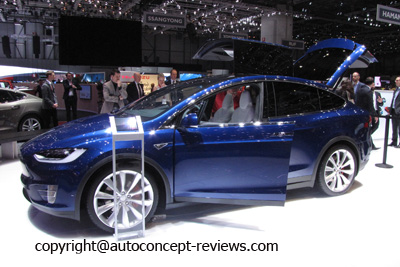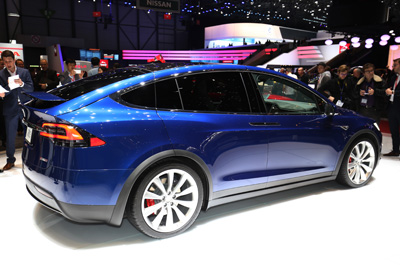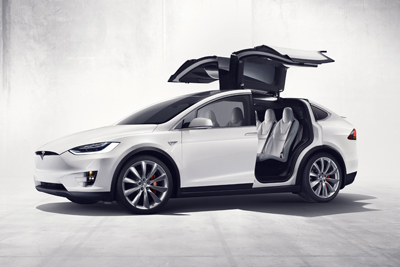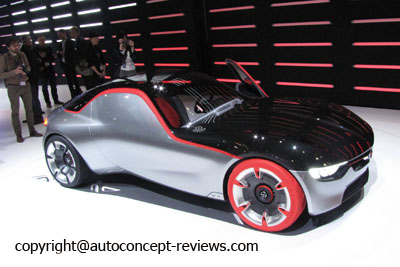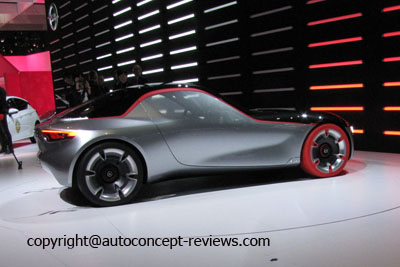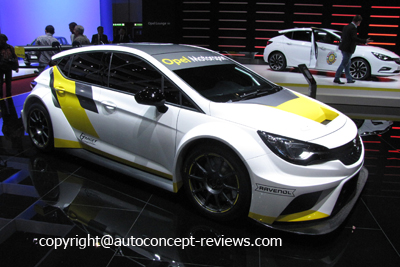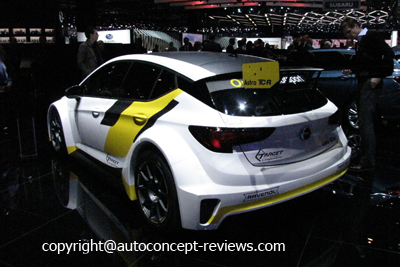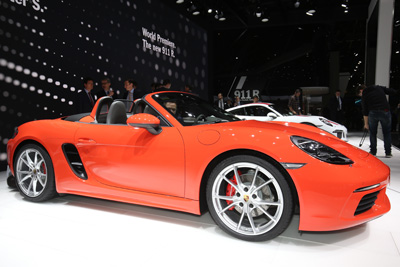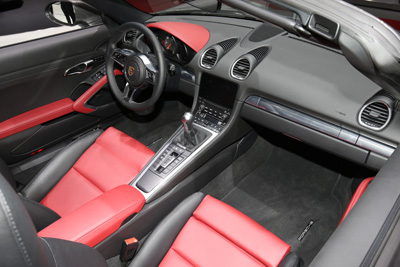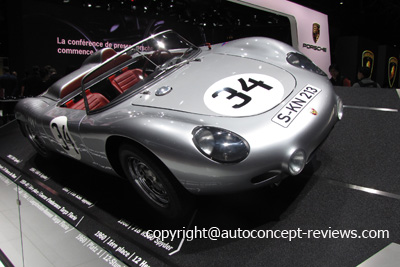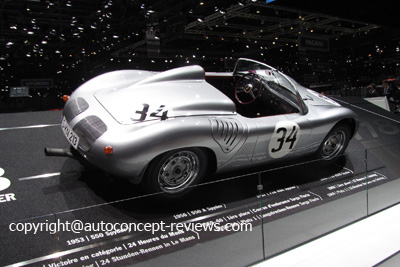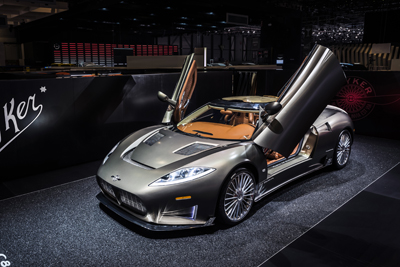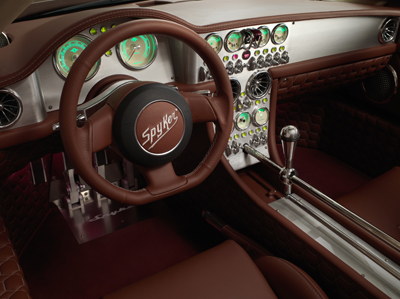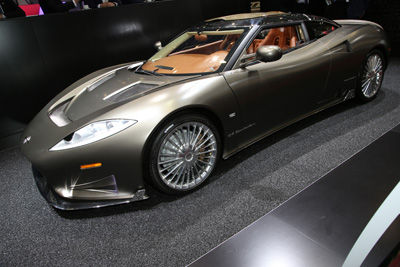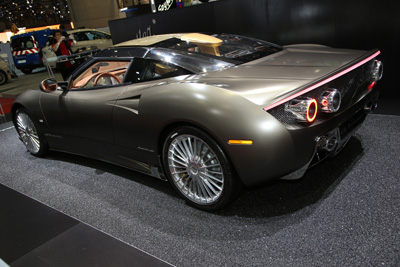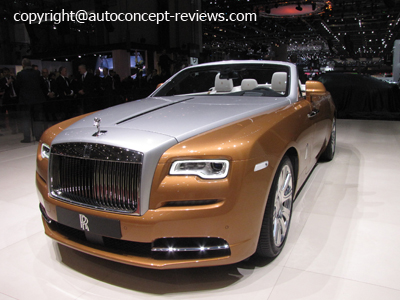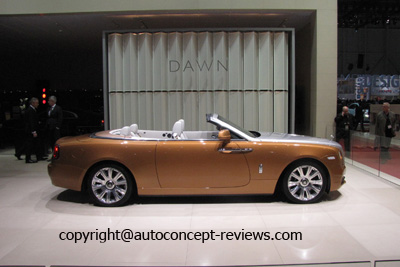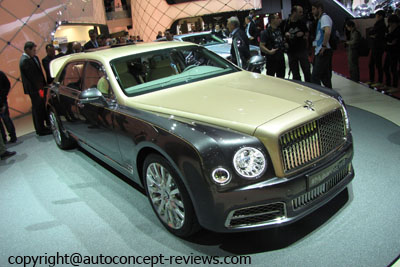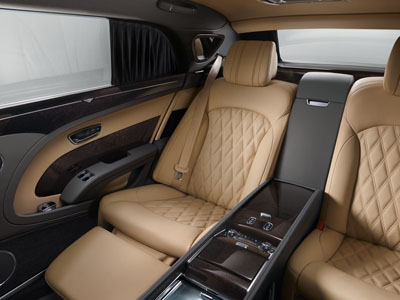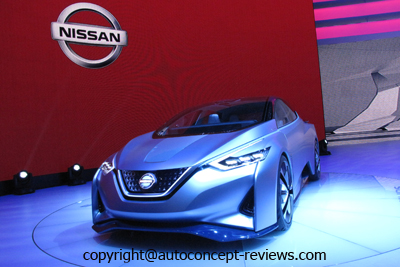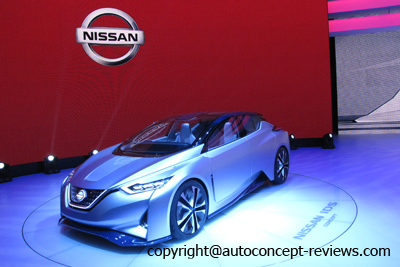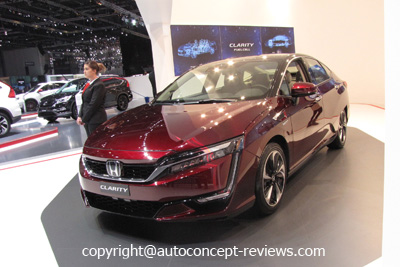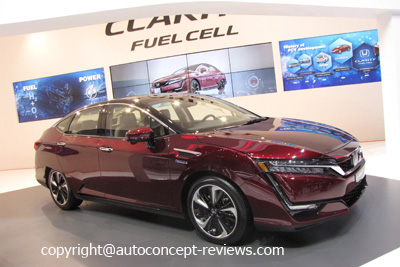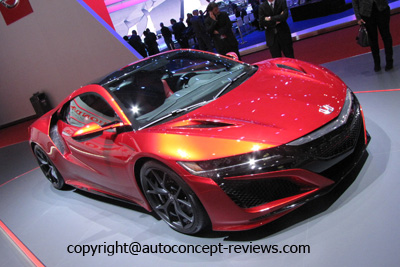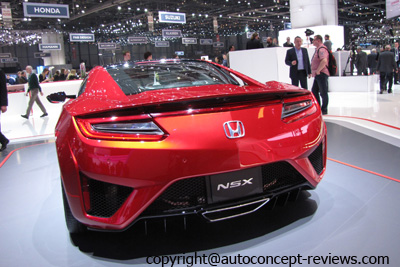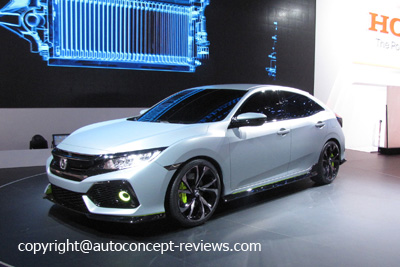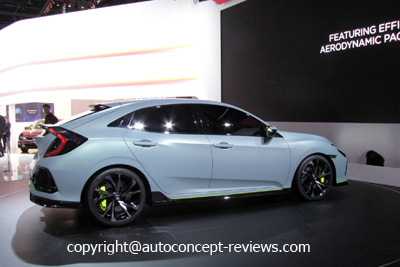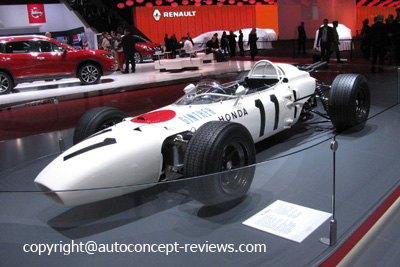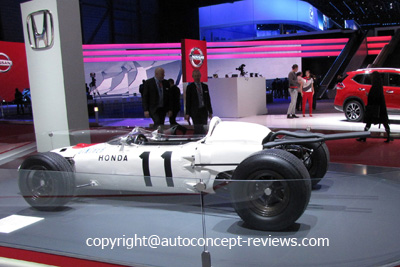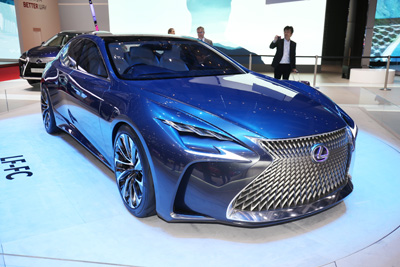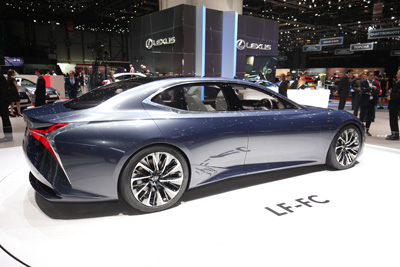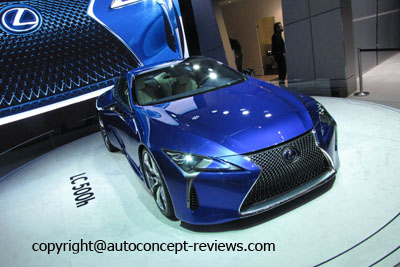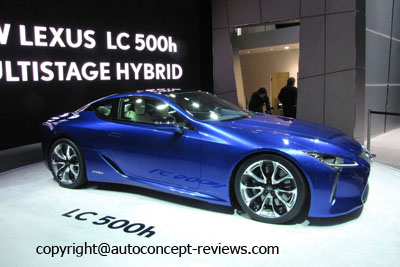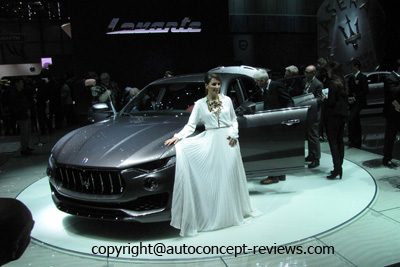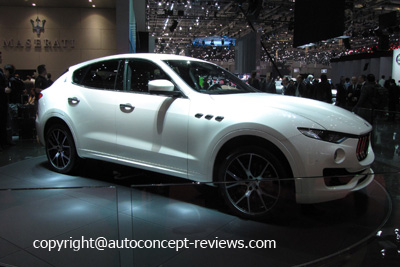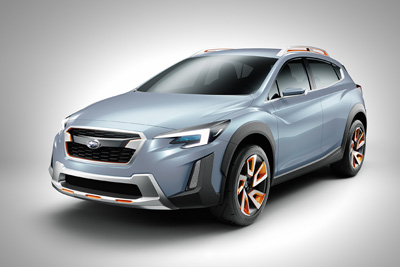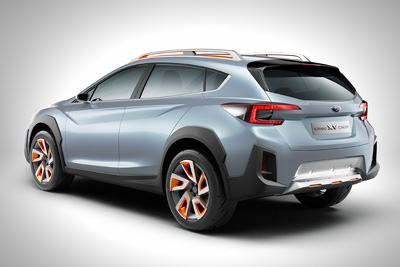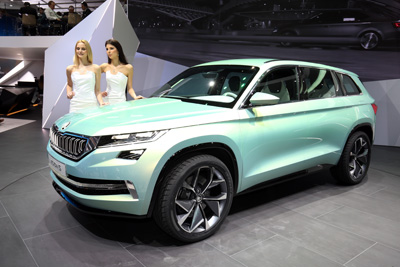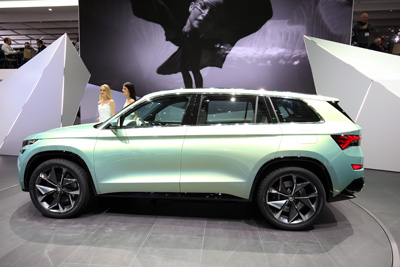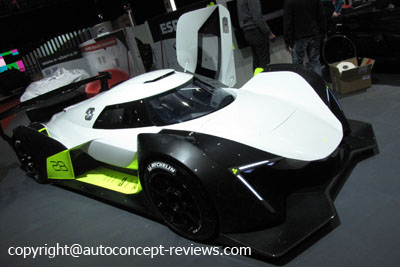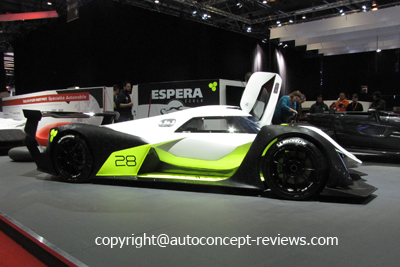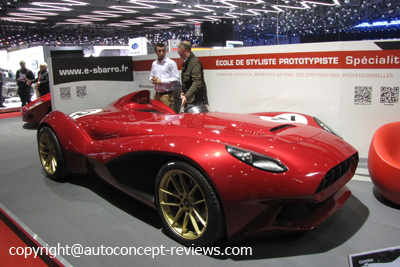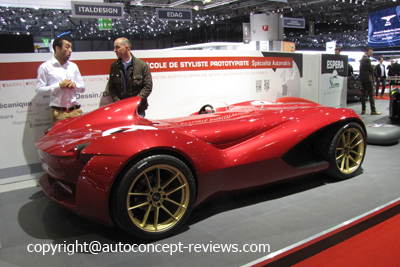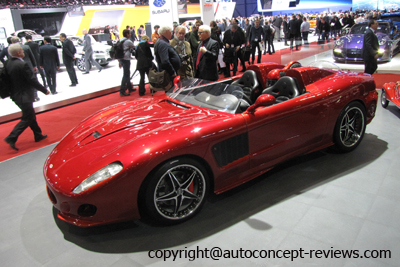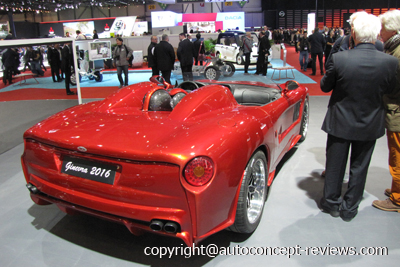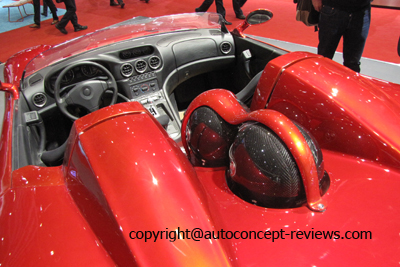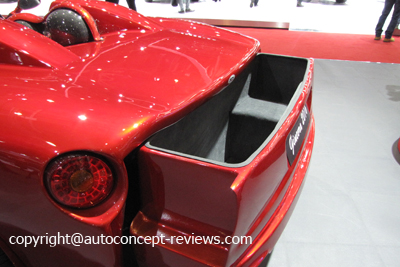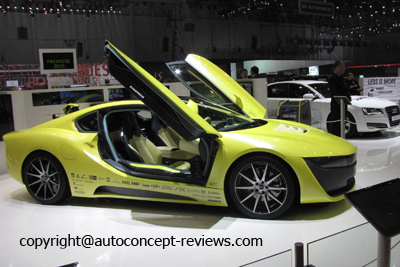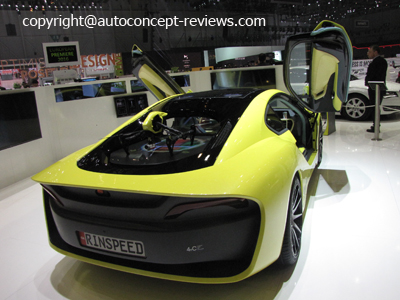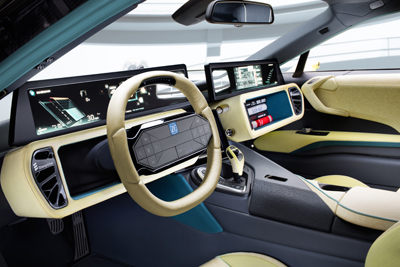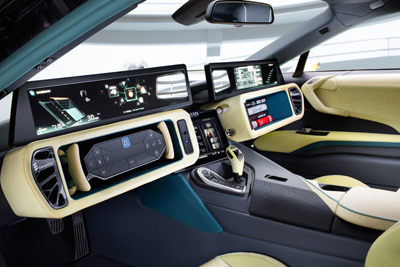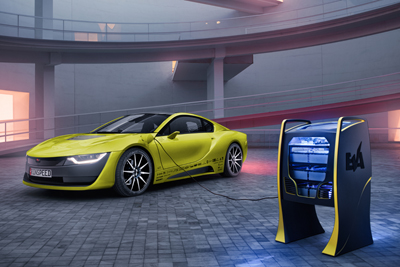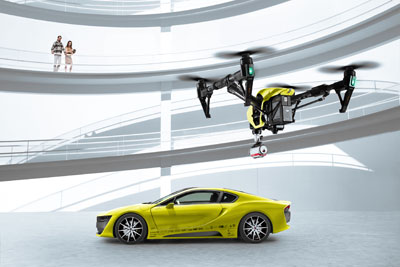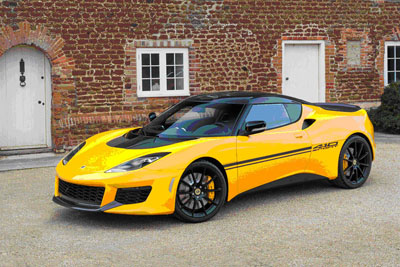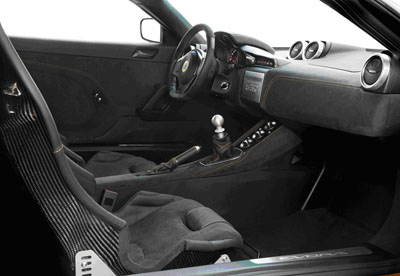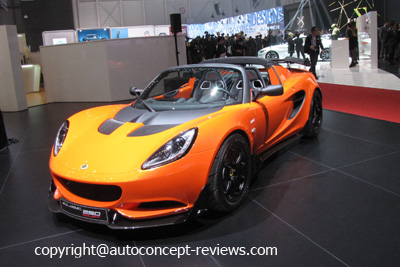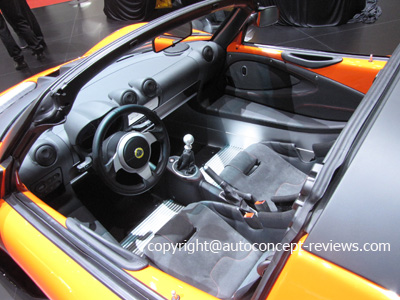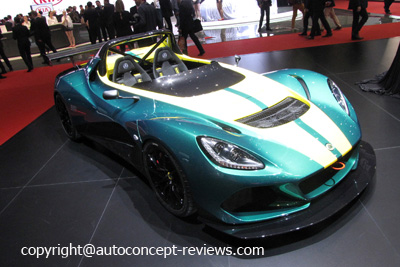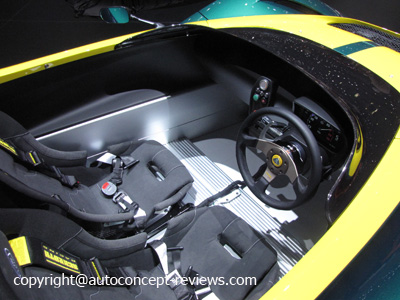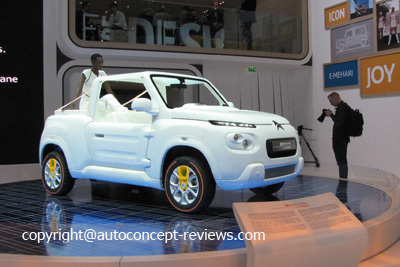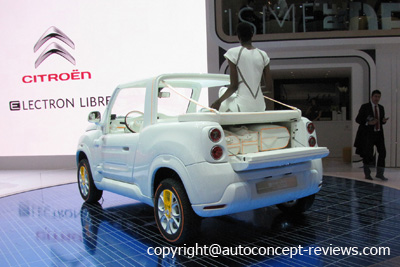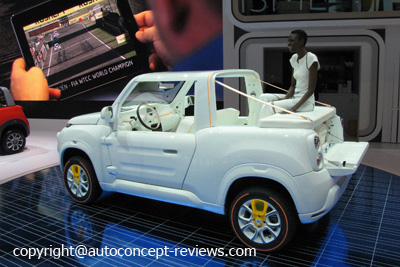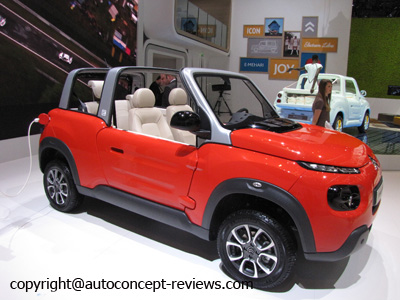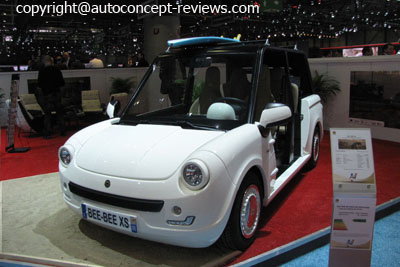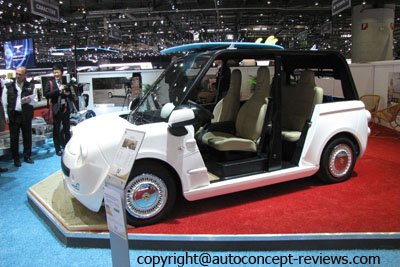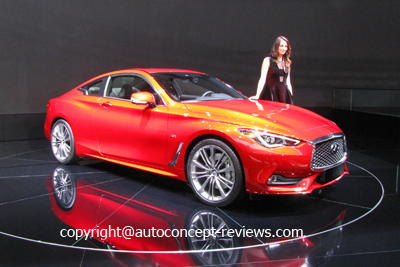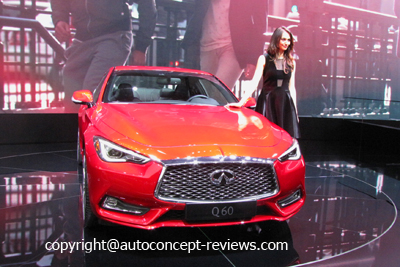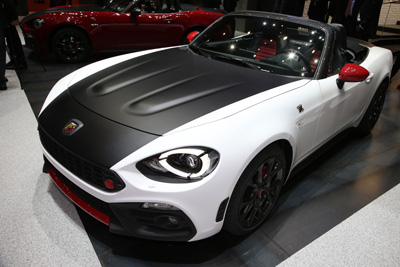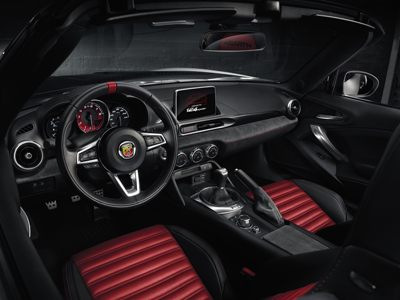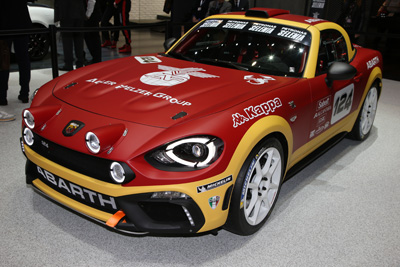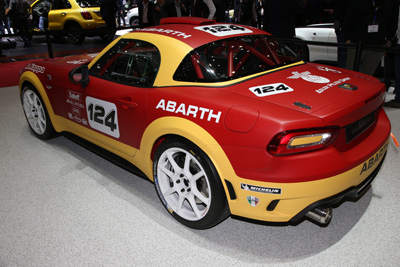- Geneva Motor Show 2016 - |
The 86th Geneva International Motor Show was outstanding, with a large number of new models, the traditional presentation of design studies and a variety of technical innovations. With a total of 687,000 entries recorded, the Motor Show gathered a light increase of visitors over the previous edition. Once again there was a large number of new generation production models. The interesting collection of exotic high performance cars and concept cars is a unique feature of the Geneva Motor Show. Several extreme cars proposed propulsion with maximum output over 1000 hp. The new Bugatti Chiron now reaches 1500 hp next to the Plug-in hybrid Koenigsegg Regera. The Arash AF10 prototype is claimed at 2080 hp with four electric motors and a large V8. Electric cars are not aside with RIMAC and Techrules in the over 1000 hp output selection.
In Grand Touring automobiles, Geneva was the occasion of several world premiere like the Ferrari GT4C Lusso, the Aston Martin DB11 or the SUV Maserati Levante.
Among Concept cars, Pininfarina, Touring Superleggera or ItalDesign maintained the Geneva Show traditions for exceptional design studies together with Franco Sbarro or the Espera Sbarro Design School. The Pininfarina H2 Speed won the Best Concept Award of the Geneva Motor Show. The car manufacturers presentation varies from the pre-production models like Skoda, Volkswagen, Subaru or real innovative show cars like the Mazda RX-Vision, the DS E-Tense or the Opel Vauxhall GT.
In new propulsion technologies, nannoFlowcell comes with a Quant FE claimed for over 1000 hp and a Quantino now homologated for road development testing; these vehicles operate in full electric with a flow cell battery that is recharged by filling, in a few minutes, two separate charged electrolyte storage tanks. The new technology would still require an electrolyte distribution network, a situation in competition with the hydrogen fuel cell solution.
Chinese R&D Company Techrules introduce a full electric extreme car with a gas turbine range extender announced for more than 1000 hp.
We are introducing here a wide selection of automobiles exhibited at Geneva Palexpo
| |
- Pininfarina H2 Speed Concept
|
|
Pininfarina introduced a design study based on the hydrogen fuel cell Green GT prototype.
The H2 Speed is Pininfarina’s innovative vision of a high performance track car based on revolutionary hydrogen fuel cell technology already subjected to severe track testing by GreenGT, a Franco-Swiss company which has been designing, developing and producing clean, sustainable propulsion systems since 2008.
"I am excited and proud for the Best Concept Award to the H2 Speed, which is the best interpretation of the Pininfarina spirit, of its tradition and its vision of the future - comments Chairman Paolo Pininfarina.
See Pininfarina H2 Speed for further details and illustrations.
|
| |
| |
The aim of Italdesign with the GTZero project was to explore the classic sports car segment, but to interpret it in line with the times and to design a high-tech, sustainable and versatile model.
“Concern for the environment and new technologies have led to cars that are both efficient and powerful,” declares Filippo Perini, Head of Design at Italdesign. “However, the car’s aesthetic personality can still be preserved: irrespective of the type of drive system, the various types of car will not disappear and sports cars will continue to exert a particular appeal. GTZero is our vision of a classic, the Gran Turismo, which embodies the traditions of Italian body designers, but is also brought up to date with tomorrow’s technologies and requirements. It has zero emissions, so it is therefore GTZero.”
see Italdesign GTZero Concept 2016 for further details and illustrations.
|
| |
- Alfa Disco Volante Spyder by Touring Superleggera - 1952 Alfa Romeo C52
|
Touring Superleggera’s 90th anniversary celebrations kickoff with the launch of the new Alfa Romeo Disco Volante Spyder.
First of a series of seven hand-built units, the Disco Volante Spyder has been technically developed with the support of Alfa Romeo on the 8C Competizione Spider chassis, merging traditional hand beaten aluminium panelling to carbon fibre
modelling.
Innovative twin carbon fibre roof converts the Disco Volante Spyder into a comfortable fixed head coupe allowing daily usage with outstanding comfort.
The Disco Volante Spyder is inspired by the 1952 Alfa Romeo C52 of which the example from the collection of Museo Nazionale dell’Automobile Giovanni Agnelli of Turin is also showcased.
See Alfa Romeo Disco Volante Spyder by Touring Superleggera and Alfa Romeo C52 Disco Volante 1952 by Touring for further details and illustrations.
|
| |
|
DS Automobiles avant-garde brand unveiled the DS E-TENSE Concept car. The electric-powered car’s luxury craftsmanship and cutting edge technologies will make it noteworthy not just for its striking appearance, but also for its hi-tech capability and exceptional performance.
A year after the official launch of the brand, DS Automobiles is unveiling the head-turning DS E-TENSE at the 2016 Geneva Motor Show, an electric-powered Supercar that silently produces 516Nm of torque, 402hp and zero emissions.
Measuring 4.72m long and 1.29m high, DS’s ambition with the DS E-TENSE is to create a high-performance electric GT car that brings together state-of-the-art technology and avant-garde design.
See DS E-Tense Concept for further details and illustration..
|
| |
- Lamborghini Centenario -770 hp V12 |
Sant'Agata Bolognese/Geneva, 1 March 2016 – Automobili Lamborghini presented the Lamborghini Centenario at Geneva Motor Show, in the year the company celebrates the centenary of founder Ferruccio Lamborghini's birth. Only 20 coupé and 20 roadster versions of the Centenario will be produced and all 40 cars are already sold, at a start price of 1.75 million euros plus tax.
See Lamborghini Centenario for further details and illustrations. |
|
| |
- BUGATTI CHIRON - 1500 hp - four turbo W16
|
|
The Bugatti Chiron is the latest generation of the ultimate super sports car and is a completely new development. The Chiron succeeds to the Bugatti Veyron of which 350 examples were produced. The sports car manufacturer from Molsheim, with its long tradition, has taken the unique features of a modern Bugatti to a new level and developed a high-performance machine that has become significantly better in every respect. With a power output of 1,500 HP, unprecedented for production vehicles, an exceptionally high torque value of 1,600 Nm between 2,000 and 6,000 rpm and a wide variety of technical innovations, the Chiron sets new
standards in every respect.
The manufacturer has limited the maximum speed of the new car to 420 km/h for road use. The Chiron is to be built at the company’s headquarters in Molsheim. Only 500 of these exceptional cars are to be produced. The basic price is €2.4 million net. Currently, advance orders have been received for one third of the total production run.
See Bugatti Chiron for further details and illustrations.
More informations and pictures concerning recent Bugatti see :
|
| |
- Ferrari GTC4 Lusso |
Ferrari announced the addition to its range of the Ferrari GTC4Lusso, the new four-seater which hails a major evolution of the sporting Grand Tourer concept by integrating rear-wheel steering with four-wheel drive for the first time.
This is a car designed for clients wanting to experience the pleasure of driving a Ferrari anywhere, anytime, be it on short spins or long journeys, snowy mountain roads or city streets, alone or in the company of three lucky passengers. Drivers who demand exceptional power but refuse to compromise on in-car comfort, sporty elegance and impeccable detailing. In short, the GTC4Lusso brings unprecedented versatility to Ferrari driving, like the FF before it which won the Prancing Horse a new, younger client base that, significantly, also makes greater use of its cars, clocking up 30% higher mileage than average.
See Ferrari GTC4 Lusso for further details and illustrations.
|
| |
- Aston Martin DB11
|
A new chapter in Aston Martin’s history began at the 86th International Geneva Motor Show with the unveiling of the DB11. The first product launched under the company’s ‘Second Century’ plan, DB11 replaces the DB9 launched in 2003. A new 600 hp twin-turbocharged 5.2 Litre V12 engine is connected to a ZF eight-speed paddle-shift torque-converter automatic gearbox propelling the rear wheels. The Aston Martin DB11 has a brand new aluminium structure. Claimed top speed is 321 km/h (200 mph) and acceleration from zero to 100 km/h (62 mph) is quoted in 3.9 seconds.
See Aston Martin DB11 2016 for further details and illustrations.
|
| |
- Ford GT and IMSA GTLM -WEC GTE Pro Racing car - 600 hp twin turbo V6
|
The all-new Ford GT supercar features rear-wheel drive, a mid-mounted engine, and a sleek, aerodynamic, two-door coupe body shell. It is propelled by the most powerful EcoBoost production engine ever – a next-generation twin-turbocharged EcoBoost V6 producing more than 600 horsepower.
Ford Performance prepared simultaneously an IMSA GTLM and ACO GTE Pro racing car that is entered since the 2016 Daytona 24 Hours in the IMSA and WEC endurance racing season. Four Ford GT GTE Pro have been entered for the 2016 Le Mans 24 Hours.
See Ford GT 2015 Supercar and Ford GT Supercar LM GTE Pro Class 2016 for further details and illustrations.
|
| |
- Mazda RX-VISION Rotary piston engine Concept
|
The Mazda RX-VISION rotary sports car concept introduces the next-generation SKYACTIV-R rotary engine and Mazda’s vision of the ultimate in front-engine, rear-wheel-drive sports car styling. Introduced at Geneva after a world premiere in Tokyo, the RX-VISION represents an ideal of the future that harbours the soul of the Mazda brand.
The RX-VISION adopts the beautiful proportions of a front-engined, rear drive sports car such as could only be envisioned by the principles of Mazda's KODO design philosophy. The styling is modern but maintains a sense of lineage and authenticity, encapsulating Mazda’s entire history of sports car design.
A low and wide body, short overhangs, a taut cabin and a low overall height make the model immediately recognizable as a serious sports car. These elements combine with an incredibly low hood -made possible by the compact and lightweight next-generation SKYACTIV-R rotary engine- to create truly one-of-a-kind proportions.
see Mazda RX-VISION Concept - Rotary engine for further details and illustrations
|
| |
- Koenigsegg Hybrid Regera -over 1500 hp-525 kW/700 hp electric drive and 1100 hp twin turbo V8
|
The Regera was created as a luxury Megacar alternative to Koenigsegg’s traditional extreme, light weight, race-like road cars. Even though the One:1 and the Agera RS have surprising levels of practicality, creature comforts and features, their primary focus is, and has always been, to be the overall fastest cars on the planet – around a racetrack or anywhere else.
The Regera will be handcrafted in only 80 examples, a suitable production run for Koenigsegg´s newly upgraded and refurbished production facility.
The difference to the Agera engine is that, given the electric propulsion of the Direct Drive system, we did not have to go as extreme on ICE power, as the combined output is way over 1500 Hp and over 2000 Nm torque, anyway.
Furthermore, the Regera can be driven in absolute silence, as it is possible to go into full EV mode for shorter periods of time.
The Regera utilizes an EV plug in feature. Behind the robotized rear number plate nestles a type 2 mode 3 charging port. This means that the Direct Drive Battery can be charged either by the combustion engine or through the charging port.
See Koenigsegg Plug-in hybrid 1500 hp Regera 2015 for further details and illustrations.
|
| |
- Koenigsegg One:1 -1341 hp twin turbo V8
|
|
The One:1 was introduced in 2014. Seven examples, including one prototype, were built during 2014 and 2015.
This was one of the most exclusive production car programs ever envisaged in the car industry. The hp-to-kg curb weight ratio is an astonishing 1:1. Thus, the name One:1.
Power output: 1 MW (1341 hp) at 7500 rpm – rpm limiter @ 8250 rpm
Torque: over 1000 Nm from 3000 to 8000 rpm
See Koenigsegg Agera One:1 2014 for further details and illustrations.
|
| |
|
- Koenigsegg Agera RS - 1160 hp twin turbo V8
|
-
|
The new Agera RS pushes the boundaries and takes the Agera to all new levels of performance.
The new Koenigsegg Agera RS has its focus set firmly on the track but is still perfect for regular use on the road. It uses advanced technology developed during our exclusive Koenigsegg One:1 program, while maintaining all the functionality of previous S and R models. Such practicalities include a usable luggage compartment and a detachable hardtop that can be stowed internally for top-down motoring at any time.
The engine is the Koenigsegg twin turbo aluminum 5,0L V8 ( 4 valves per cylinder, double overhead camshafts, dry sump lubrication
Compression: 9.3, twin ceramic ball bearing turbo chargers with Koenigsegg patented
backpressure reduction system with variable turbo geometry. 1.3 bar (1.4 with E85)
boost pressure) producing 865 kW (1160 hp) at 7800 rpm
|
| |
- Pagani Huayra BC -800 hp twin turbo V12
|
|
This special edition Pagani Huayra shall be produced at 20 units only. The designation BC goes for Benny Caiolan, one of the first Pagani customer and strong supporter. The car is lighter and more powerful and is aimed essentially for track use. The 6 Litre twin turbo V12 produces 60 hp more than the 'standard' edition and that makes near 800 hp.
See related article Pagani Huayra for further details and illustrations.
|
| |
- Apollo Arrow and Apollo N -1000 hp twin turbo V8
|
Following restructuring in 2015, Gumpert Sportwagenmanufaktur GmbH was rebranded as Apollo Automobil GmbH. The company’s new owner, Ideal Team Ventures Limited, is a holding company with investments in a range of industries.
Roland Gumpert remains CEO and Chief Engineer at Apollo, leading a team of engineers and technical experts in the Arrow’s development. “The Arrow is truly magnificent – it is the perfect combination of German engineering and automotive art,” comments Mr Gumpert. “Although it’s still a prototype, we are confident that the Arrow will achieve the unimaginable.”
“Our team in Germany and UK have managed to transform an extremely powerful engine to a new hyper-car, while taking all vehicle dynamics and aerodynamic parameters into consideration,” says Bailey Xu, Managing Director, “I was instantly electrified by the idea of applying the characteristics of the F22 Raptor to the Apollo Arrow, with the inspiration of marine biology, the Arrow could deliver up to 1000 HP and 1000 Nm of torque, and thus taking Apollo to a new level.”
the fluidity of the design – like a shark – gives the Arrow the appearance of constant motion, even when it stands still.
The new Apollo Arrow boasts a remarkable torque of 1,000 Nm at 3,650 rpm thanks to the 3.993-litre capacity of its twin turbo V8 engine. An output of 1,000 HP is achieved at 6,750 rpm. These impressive figures allow the car to reach 100 km/h (62 mph) from standing in less than 2.9 seconds. The Arrow has a top speed of 360 km/h (220 mph).
A maximum of 100 unique Apollo Arrows are planned for production, each of them exclusively tailored to its owner.
The Gumpert Apollo S held the Nurburgring record for more than four years, earning it the title of “Fastest Street-Legal Production Race Car”. To continue this legacy, Apollo will be launching a limited edition Apollo N – with production restricted to just six vehicles.
|
| |
- ARASH AF10 Hybrid prototype - 2080 hp 4 electric motors, 1 V8 engine
|
ARASH Motors was founded in 2006 by Arash Farboud with the unveil in 2014 of the Arash AF8 two seats sports car with 550 hp Corvette V8 engine in mid rear position and multi-tubular space-frame. ARASH AF10 new prototype drive system consists of 5 parts, 4 electric motors and 1 petrol engine. In total the warp drive system weighs 280kg.
Each drive unit has it’s own gearbox, 2 speed for the electric drives and 6 speed for the petrol engine. Manual or Paddle-shift.
The petrol engine is a 6.2 Litre V8 with a compact supercharger and intercooler. and produces 900 hp.
The 880 kW (1180 BHP) for four 220 kW electric motors combined with the 900 BHP of the petrol engine gives a total total 2080 BHP.
Battery is Kreisel Liquid cooled, high performance Lithium-Ion (Li-Ion) Hybrid unit. Energy content is 32kWh at max power output of more than 880 kW.
The chassis is a patented carbon reinforced 13 pieces construction in T1000 carbon fibres and Aramids. Sandwich panels of carbon and aluminium honeycomb are inserted in this chassis. Fuel tanks and battery pack housed in lower floor sections and side pontoons.
Front and rear sub assemblies in machined aluminum and Tig welded box sections.
|
| |
- Chevrolet Corvette C7 Grand Sport and C7-R
|
With Corvette Racing in its DNA, the all-new 2017 Corvette Grand Sport is a pure expression of the car’s motorsports-bred pedigree. It was introduced today at the Geneva International Motor Show.
Like the 2015 Le Mans-winning Corvette C7.R GTE Pro race car, the new Grand Sport combines a lightweight architecture, a track-honed aerodynamics package, Michelin tires and a naturally aspirated engine.
The Grand Sport Collector Edition features an exclusive Watkins Glen Gray Metallic exterior with Tension Blue hash-mark graphics, satin black full-length stripes, black wheels and a unique Tension Blue full leather and suede-wrapped interior.
Corvette Racing started the 2016 season by winning GTLM Class at Daytona 24 Hours and Sebring 12 Hours with the Corvette C7-R.
See related article Chevrolet Corvette Stingray C7 2014 and Corvette Stingray ZO6 and C7 R 2015 for further details and illustrations.
related article Corvette Grand Sport 1964
|
| |
- Jaguar F Type SVR
|
|
The Jaguar F-Type SVR was introduced at Geneva. Power comes from a 567 hp, 516 lb ft version of the 5.0 Litre supercharged V8. The Jaguar F-Type SVR is four-wheel drive and uses an eight speed automatic gearbox. The 1705 kg F-Type SVR coupe is capable of 0 to 60 mph (96 kph) in 3.5 seconds and reaches a top speed of 200 mph (322 kph).
See related article Jaguar F-Type Coupe 2014 and Jaguar F-Type 2012 for further details and illustrations.
|
| |
- Rimac Concept One and Concept S -1088 hp 4 electric motors
|
|
Rimac Automobili was founded in 2009 to push the limits of technology and electric powertrains.
Rimac Automobili unveiled the production version of the world’s first all-electric hypercar, the Concept_One, at the Geneva Motor Show 2016.
Distributing a total of 800 kW / 1088 HP and 1600 Nm of torque, the Rimac All Wheel Torque Vectoring (R-AWTV) system precisely calculates the optimum torque for each wheel. R-AWTV uses inputs from several precise sensors strategically positioned around the chassis and suspension to calculate the optimal torque distribution between the wheels through complex mathematical models and control algorithms. The system provides unseen flexibility and grip by controlling each motor individually one hundred times per second.
This enables the Concept_One to accelerate from standstill to 100 km/h in just 2,6 seconds and, to 200 km/h in 6,2 and to 300 km/h in mind-blowing 14,2 seconds. The top speed is electronically limited to 365 km/h. The 650 V 82 kWh Rimac Automobili Battery and Thermal Management Systems is centrally located in the car. The Rimac Concept One weights 1800 kg.
The R-AWTV functions as a traction control, stability control and “electric ABS” system that also commands the 4-wheel regenerative braking of up to 400 kW that works together with the carbon-ceramic braking system. The ambitious goal Rimac Automobili set themselves is to produce as much as possible in-house, in Croatia.
The Rimac Concept_S is designated as the 'evil twin' to the Concept One and is built to utilize the maximum potential of the Rimac All Wheel Torque Vectoring system. Compared to the Concept_One, the Concept_S has 218 kW (296 hp) and 200 Nm more power and torque, 50 kg less weight, and an aggressive aerodynamic package.
The aerodynamic elements enhance downforce by 34 % (up to 650 kg of load) which press the chassis to the ground. Combined with high-performance tires, higher levels of grip are enabled opening a wide spectrum of extreme setups for the Rimac All Wheel Torque Vectoring (RAWTV) system. With 1384 hp and 1800 Nm of torque, the Concept_S raises the bar of dynamic performance. This enables the Concept_S to accelerate from standstill to 100 km/h in just 2,5 seconds, to 200 km/h in 5,6.
|
| |
- WB Motors Lykan Hypersport - Magna Steyr - 780 hp twin turbo Flat Six |
W Motors was initiated in 2012 in Beirout, Lebanon, by Ralph Debbas for the preparation of an exclusive sports car, the Lykan Hypersport. In 2013, the headquarters were moved to Dubai in United Arab Emirates. After more than two years of development, the production ready Lykan Hypersport had its European debut at the principate of Monaco.
As one of the only automotive suppliers in the world with complete vehicle manufacturing capabilities, Magna International, together with its customer, W Motors SAL, have exhibited the Lykan Hypersport at the Geneva Motor Show. Magna was the engineering and manufacturing partner that designed and built the supercar's prototypes. The vehicles were produced by Magna Steyr's Engineering Center in Italy along with high performance sports car developer W Motors and RUF Automobile Gmbh.
The Lykan Hypersport is a two seats coupe with carbon composite body and is propelled by a 3.746 cc Flat six engine with twin turbocharger and independent intercooler in mid rear position producing 780 hp at 7100 rpm and 960 Nm at 4000 rpm. The transmission is a six speed sequential gearbox connected by a limited slip differential to the rear wheels. The claimed maximum speed is 385 kph (240 mph) and acceleration 0 to 100 kph (0-62 mph) is announced in 2.8 seconds.
|
| |
- ZENVO TS1 and TSR - new twin supercharger 5.9 Litre flat eight engine (power output not revealed)
|
|
The Danish supercar Zenvo TS1 (grey car on photos) follows to the Zenvo ST1 introduced in 2009 for 800.000 Euros and limited to 15 examples. The Zenvo TS1, also limited to 15 examples, is equipped with a new 5.9 Litre twin supercharger flat eight engine. The Zenvo TSR (yellow car on photos) is a track only version of the TS1. The Zenvo TSR is featuring heavy aerodynamic changes improving downforce as well as lower ground clearance and stiffer racing suspension. The car is a weight optimized and features a true minimalist racing
interior with a roll cage, racing seats and 6 point seat belts.
According to Zenvo CTO Troels Vollertsen, the engine delivers instant throttle response, a wide torque curve and an incredible power output. The inlet manifolds are manufactured from carbon fibre resulting in significant weight saving on the engine unit and a lower centre of gravity comparing to the ST1.
Top speed for the Zenvo TS1 is electronically limited to 375 km/h. The new hypercar is available with two types of gearbox: a 7-speed synchronized paddle shift gearbox with auto mode, and a 7-speed race inspired paddle shift gearbox with dog-engagement .
'The exterior design has remained true to our core values'. Zenvo chief designer Christian Brandt explains; ‘Every now and then with design you strike something that has timeless appeal. We believe the Zenvo has that appeal; that is why we have only introduced subtle changes to the design and made it a bit sharper and more aggressive in keeping with
the sporty credentials of the new engine. In order to optimize downforce the front splitter, rear wing and diffuser have been redesigned. We have added a vertical wing in the intercooler inlet behind the doors in order to improve intercooler flow and efficiency. The rear bumper and exhaust system have also been modified’.
|
| |
- Dodge Viper ACR Coupe - 645 hp V10
|
|
The Dodge Viper ACR Coupe is propelled by a 8.4 Litre 90° V10 SFI producing 645 hp at 6.200 rpm and maximum torque of 814 Nm at 5.000 rpm. Claimed track top speed is 204 mph while 0 to 62 mph should be completed in less than 3 seconds. The transmission is by Tremec six speed manual gearbox. The car is equiped with a five-mode electronic stability control and comes with special wing rear spoiler and front splitter.
Related article: details and illustrations of Chrysler Group – SRT Viper GTS and Viper GTS-R 2013, Chrysler SRT Viper TA Time Attack Road Racer 2014 and Chrysler Group - SRT Viper GT3-R 2014
|
| |
- McLaren P1 -903 hp - 1 electric motor, 1 twin turbo V8
|
McLaren Special Operations (MSO) exhibited the McLaren P1™ supercar which recently ceased production.
Related article: details and illustrations of McLaren Plug-in Hybrid P1 2013
|
| |
- McLaren 570GT Coupe
|
|
The McLaren 570GT joins the 570S Coupé and 540C Coupé as the third model in the recently announced Sports Series family.
The 570GT is the most practical model ever launched by McLaren Automotive, targeted towards longer journeys and weekends away. As with all Sports Series models, ingress and egress are optimized through a lower and narrower sill, while the signature dihedral doors open with a more upward arc.
The standard fixed glass Panoramic Roof provides a bright, open cabin with a dramatic glasshouse design running through to the large rear glass hatch.
The front luggage area remains unchanged from the Coupé, providing 150 litres of stowage, while a further 220 litres of space is available behind the seats on the leather-lined Touring Deck. This additional space is accessed via the side opening Glass Hatch bringing the total storage space for the 570GT to 370 litres. The Glass Hatch opens on the kerbside whether left- or right-hand drive and is framed by carbon fibre providing significant torsional rigidity.
As with all McLaren models since the introduction of the MP4-1 Formula 1™ car in 1981, the 570GT uses a carbon fibre chassis. The MonoCell II debuted in the 570S Coupé, and is shared across the Sports Series models. Weighing just 75kg, the lightweight yet extremely stiff chassis contributes to a dry weight of 1,350kg (2,976lb). This equates to 422PS per tonne, providing breathtaking performance more commonly seen in the supercar segment: 0-100 km/h (0-62 mph) in 3.4 seconds, with a top speed of 328 km/h (204 mph).
|
| |
- nanoFlowcell Quant FE and Quantino prototypes. -1074 hp 4 electric motors
|
|
Since it was founded in 2013, nanoFlowcell AG has concentrated on the research and development of this innovative technology and is the pioneer in the technical adaptation of flow cell technology for mobile application in vehicles
In contrast to conventional electric, nanoFlowcell® vehicles do not require a complex recharging infrastructure. The electrolyte liquids involved are non-toxic, non-flammable and inexpensive to produce. Similarly to a conventional car, they are refuelled via a hose-and-nozzle system, with the only different being the use of a double hose for the negative and positively charged ionic liquids.
The gullwing doors of the all-wheel drive QUANT FE create a dramatic visual – its flow design indicative of its aerodynamic efficiency. The distinctive new QuantEyes LED headlamps give the QUANT FE an unmistakable look. With its 2+2 design, it is one of the world’s most versatile super sports cars. Its nanoFlowcell® drive promises not only breathtaking performance, but also a completely new dimension in electric driving fun. The Quant FE is propelled by four AC synchronous motors with a maximum power of 801 kW (1074 hp). The rated capacity of the battery is 70 kWh. The electrolyte tanks capacity is 2x250 litre. Claimed top speed is 300 km/h and acceleration from zero to 100 km/h (62 mph) is quoted in 2.8 seconds. The Quant FE is now homologated for road development testing. The Quant FE is 5,257 mm long for 2,019 mm width and 1,357 mm height. The quoted range for the Quant FE is over 800 km depending on driving conditions.
The 1,420 kg kerb weight Quantino 2+2 seats is currently registered for road use, but there is only one of them.
The low-voltage system in the QUANTiNO is the ideal enhancement to nanoFlowcell®. The combination of both means the QUANTiNO achieves a significantly longer range than conventional electric vehicles, while maintaining a very low overall weight. The Quantino is 3,910 mm long for 1,930 mm width and 1,335 mm height. The Quantino is rear wheel drive with a three phase asynchronous motor rated at 80 kW (108 hp). There are two electrolyte tank of 159 litre capacity each. Quoted range is over 1000 km depending on driving conditions.
Both Quant FE and Quantino utilisation is depending on availability of electrolyte distribution network. Presently one filling station is available at nanoFlowcell headquarter for development testing.
|
| |
- Techrules TREV Plug in Hybrid Prototype -1030 hp gas turbine range extender
|
|
The new Chinese R&D business, Techrules, showed a Plug in Hybrid prototype applying its proprietary Turbine-Recharging Electric Vehicle (TREV) technology. The Techrules is exhibited as a running prototype concept supercar with peak power of 1.030 hp and a range of 2.000 km with a fuel consumption claimed at 0.18 l/100 km.
William Jin, the founder and CEO of Techrules, said: “The TREV system is a perfect combination of micro turbine and electric vehicle technologies. It is highly efficient, produces very low emissions and provides an optimal charging solution for electric vehicles.
“We believe it may redefine how the next generation of electric vehicles is powered.” insists William Jin.
|
| |
- Ferrari 488 GTB
|
|
Forty years on from the unveiling of its first ever mid-rear-engined V8 model, the 308 GTB, the Prancing Horse opens a new chapter in its 8-cylinder history. The Ferrari 488 GTB provides track-level performance that can be enjoyed to the full even by non-professional drivers in everyday use. Its response times, nimbleness and on-the-limit driving guarantee a unique sense of exhilaration and unparalleled driving pleasure.
See Ferrari 488 GTB Berlinetta 2015 for further details and illustrations.
|
| |
- SIN R1 GT -530 hp V8
|
|
The British road and racing SIN R1 was introduced in 2013 at the Goodwood Festival of Speed. It is the road legal version of the R1 GTB Racing competing in the British GT Cup Chamionship. The 1150 kg (2,535 pounds) R1 is propelled by a 530 hp Chevrolet LS3 6.2 Litre V8 and the standing start acceleration 0 to 60 mph (96 kph) is claimed for 3,5 seconds. The chassis is a tubular space frame while the body is made of carbon fibre composite.
|
| |
- Radical RXC Coupe - 600 hp twin turbo V6
|
|
Radical sold more than 1000 entry-level SR1 racing car with Suzuki four cylinder engine, the company introduce the RXC Coupe inspired by racing LMP2 automobiles. The Radical RXC Coupé is propelled either by a 600 hp twin turbo 3.5 Litre Ford Eco-Boost V6 or by a 72° 2.9 Litre 450 hp RPY V8 engine. This racing prototype is also available in road legal two seats version.
|
| |
- Kahn Design Vengeance
|
The Vengeance is a ‘coach built two door retro classic coupe’, based on an Aston Martin DB9.
Quite simply, Afzal Kahn has fulfilled his lifelong ambition to create a car he deemed worthy to drive.
He said: “launching the Vengeance is the realisation of a dream I’ve had since childhood, to design and produce my own car. I’ve worked in the industry my whole career, and I want to leave a legacy which I can be proud of."
The Kahn Vengeance shall be produced in only 5 examples, 3 of which are already sold for £ 350.000.
|
| |
| |
- Renault Sport R.S.01 |
The technical characteristics of Renault Sport R.S. 01 are on a par with its spectacular design. Providing effective protection for the driver, the carbon monocoque chassis enables a vehicle weight of just 1,100 kg. Installed in a central rear position, the Nismo V6 3.8L twin-turbo engine developing more than 500 hp is mated to a Sadev seven-speed sequential gearbox. With carbon brakes and special Michelin tires, Renault Sport R.S. 01 embodies the full technical expertise of Renault Sport Technologies.
"If we had to sum up Renault Sport R.S. 01 in a few words, we could describe it as a marriage between the beauty of Renault DeZir and the performance of Formula Renault 3.5!”
Patrice Ratti, CEO of Renault Sport Technologies
The Renault Sport R.S.01 is one of the stars of World Series by Renault in a new championship, the Renault Sport Trophy, a springboard for the professional GT and Endurance championships.
...More informations and pictures see Renault Sport R.S.01 racing car 2015
|
| |
- Peugeot 308 R HYbrid Demonstrator |
PEUGEOT SPORT has developed the plug-in 308 R HYbrid. This hybrid petrol plug-in prototype incorporates three power sources. The first unit is a new 308 GTi by PEUGEOT SPORT 4-cylinder petrol 1.6L THP 270 S&S engine, with the high power rating of 169 hp/l, the second unit is an electric motor with power of 85 kW / 115 hp, connected to the front wheels via the 6-speed gearbox and the third unit is an electric motor with the same characteristics on the rear axle.
The result is on a par with that challenge: quite simply astounding. Developing 500 hp with four wheel drive, PEUGEOT 308 R HYbrid has its speed limited electronically at 250 km/h, going from 0 to 100 km/h is under 4.0 seconds, and covering 1,000 m from a standing start in under 22.5 seconds. In spite of all that, CO2 emissions are just 70 g/km.
|
| |
|
- Peugeot Fractal Concept
|
Peugeot Fractal is an electric urban coupé revealing a prospective design of the Peugeot i Cockpit® that explores another of the senses: following on from visual; sight, embodied by the head-up display, and touch; with the compact steering wheel and touchscreen, Peugeot Fractal showcases unprecedented attention to acoustics in automotive design. The result is a level of auditory perception that further enriches the driving experience.
More informations and pictures see Peugeot Fractal i Cockpit, Electic urban concept 2015
|
| |
- Peugeot 2008 DKR winner 2016 Dakar Rally Raid
|
After deceptive 2015 edition, Peugeot reworked completely the Peugeot 2008 DKR and the new contender finished first and second in the 2016 Dakar Rally raid edition.
It is the fifth occasion that Peugeot won the Dakar Rally Raid.
Related article Peugeot 2008 DKR for 2015 Dakar Rally Raid.
|
| |
- Toyota Hilux on 2016 Dakar Rally Raid podium
|
The Toyota Hilux driven by Giniels De Villiers finished in 3rd position the 2016 edition of the Dakar Rally Raid. Seven Toyota Hilux completed the Rally Raid.
|
| |
- Toyota Mirai Hydrogen Fuel Cell
|
|
The Geneva Motor Show was the first European presentation of the production Toyota Mirai Hydrogen Fuel Cell as it is launched for sale on the markets where an hydrogen distribution infrastructure exists. The production rate has been increased to attend market demand. Toyota’s new hydrogen fuel cell car, the Mirai, has successfully completed its 100,000 kilometre European road test. The test started on 21st September 2015 and finished on 10th February 2016. Every day for 107 days, the Mirai was on the road for 16 hours. During its 100,000 kilometre journey, the car was refuelled nearly 400 times with just over 1000 kg of hydrogen, its tyres changed twice, and its front brake pads replaced. No mechanical breakdowns were reported.
Related article Toyota Mirai Hydrogen Fuel Cell .
|
| |
- Toyota Kikai Concept |
Making its European debut at the 2016 Geneva motor show, Toyota Kikai has been designed to explore, reinforce and, above all, celebrate the fundamental appeal of machines: their intricacy, mechanical complexity and, of course, beauty in motion.
As a true concept car, Toyota Kikai 's appeal is in a design which is simultaneously reliant on, and yet free from, the core concepts of the modern automobile.
TOYOTA KIKAI takes the machinery normally hidden beneath a vehicle’s bodywork, and reveals it. Throughout, the componentry on display has been painstakingly detailed to celebrate the intricacy and mechanical elegance of its construction, whether simple or complex in nature.
To that end, the bodywork of the mid-engined concept has been kept to a bare minimum, simply enclosing the structural core of a central, three-seater cabin. Housed within exposed aluminium sub-frame members, all other components are uncovered; the vehicle’s inner workings becoming part of the exterior.
|
| |
- Morgan 4/4 80th Anniversary
|
Conceived in 1935, the introduction of the 4/4 signalled Morgan’s move to 4 wheeled vehicles and the beginning of the next chapter in Morgan history. On the 15th of October 1936, the eagerly anticipated 4/4 debuted at the London Motor Show, held at Olympia. The modest 4/4 was a lightweight, affordable runabout that had been proven in local trials with great success across the UK.
This model has been a stalwart of the Morgan model range since its inception 80 years ago, and despite a short break during WWII, has been in continuous production ever since.
2016 marks 80 years of this automotive icon, a British success story and one of the longest running production car in the world. To celebrate the Morgan Motor Company introduces a limited edition 80th anniversary 4/4. Just 80 examples will be produced, each entirely hand crafted and featuring a multitude of new features inspired by the first edition cars
The 4/4 80th anniversary uses a 1.6 litre Ford Sigma engine, is available from one of many dealers in homologated markets and is offered as right or left hand drive. Prices start at £33,330.00 Excluding taxes.
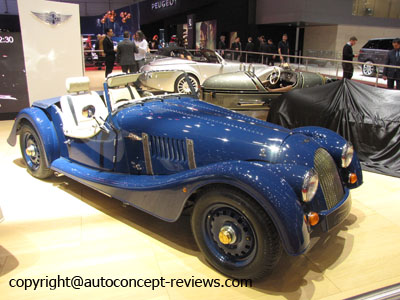 |
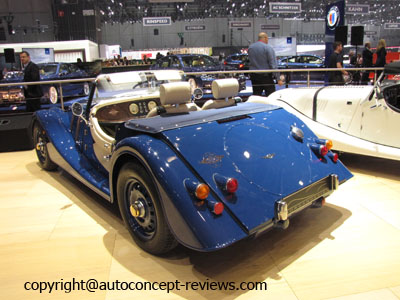 |
|
| |
- Morgan EV3 electric tricycle prototype |
Morgan introduced at Geneva a “pre-production phase” car which reveals the restyled body and interior. Weighing less than 500kg, the all-electric 3 Wheeler has a range of 150 miles.
Lightweight agility is complemented by performance figures that challenge those of the petrol 3 Wheeler. 0-62mph takes less than 9 seconds and a top speed in excess of 90mph. Encased within the tubular space frame chassis is a 20KWh Lithium Battery and a liquid cooled 46kW motor driving the rear wheel.
The EV3 is the first Morgan vehicle to utilise composite carbon panels in its body construction. The carbon bonnet, tonneau cover and side pods are made in the UK, and much like the remaining aluminium panels, are hand worked over an ash wood frame.
see Morgan EV3 for more details and illustrations
|
| |
- Volkswagen T-Cross Breeze Concept
|
“This open-top Volkswagen enhances the world of compact cars with a completely new attitude to automotive life”, says Dr Herbert Diess. With this, the Chairman of the Board of Management Volkswagen Brand gets to the core of the bold theory behind this concept car, which celebrates its world premiere at the Geneva Motor Show. The Volkswagen Brand Chairman continues: “Our T-Cross Breeze is the first open-top SUV in its class and, at the same time, an affordable, cheeky cabriolet with a raised seating position that gives you a perfect view.” With this concept, Volkswagen underlines the fact that the brand is blazing a trail and making mobility more of an experience than ever before."
The T-Cross Breeze is powered by a highly efficient 1.0 litre TSI turbo petrol engine with an output of 81 kW/110 PS.
The T-Cross Breeze offers the first exciting look at an entirely new Volkswagen SUV.
|
| |
- Tesla Model X
|
|
The Tesla Model X is the third full electric vehicle introduced by Tesla.
The double-hinged Falcon Wing doors open up then out, requiring only 30 cm of space on the side of the vehicle. Each door is equipped with capacitive, inductive, and sonar sensors to monitor surroundings and avoid contact with obstacles around the car, making it possible to park in tight spots.
At the heart of the vehicle is Tesla’s proven electric powertrain, accelerating Model X from 0-60 in a staggering 3.2 seconds and hitting a top speed of 155 mph, all while producing zero emissions.
Designed with Tesla’s electric vehicle architecture, Model X’s floor-mounted battery gives the vehicle a low center of gravity and ideal weight distribution for exhilarating performance and superior handling.
Signature Model X comes with a 90 kWh battery providing customers a driving range of 250 miles on a single charge.
|
| |
- Opel Vauxhall GT Concept |
A key innovation of the GT Concept is its large doors with integrated side windows that show a seamless transition from glass to painted surfaces. Both driver and front passenger gain access to the spacious interior after pressing a touchpad for the electric doors that is integrated in the red signature line of the roof. The doors cleverly open into the front arches, using a space-saving and patented mounting that allows a large opening angle for tight parking spaces in urban areas. Two cameras mounted behind the wheel arches offer enhanced visibility, especially in city driving. They transmit their images to two monitors on the left- and right-hand side of the cabin, rendering external mirrors obsolete. The windscreen flows into a glass panorama roof, affording occupants a similar experience to that of a targa-topped car.
See Opel Vauxhall GT Concept 2016 for further details and illustrations.
|
| |
- Opel Astra TCR
|
The Opel Astra TCR based on International TCR (Touring Car Racing) specifications, combines ultra-modern racing technology with an effective safety concept while simultaneously remaining close to production. It enables the Opel teams to compete in short and long distance races – such as the 24-hour race on the Nürburgring – with a technically unchanged vehicle.
The 5-door Astra is powered by a highly efficient two-liter turbocharged engine that will deliver 330 hp and maximum torque of 420 Nm (both determined by the “Balance of Performance” concept), thus ensuring that vehicle with a curb weight of 1,200 kilograms has enough propulsion. This power is transferred to the front wheels via a sequential, six-speed racing transmission with the paddle shift located on the steering wheel. Adhesion is established via a twin-disc sinter metal clutch. An automated double declutching system creates stability when shifting down. The racing car is decelerated by 378 mm brake discs and 6-piston brake calipers at the front along with 265 mm brake discs and 2-piston brake calipers at the back. The driver can modulate the braking balance from the cockpit.
|
| |
- Porsche 911 R |
Unveiled at the 2016 Geneva International Motor Show, the new Porsche 911 R is a pure-bred sports car built to conform to a time-honoured formula; a powerful 500 hp (368 kW) four-litre naturally-aspirated flat-six engine driving the rear wheels, a six-speed manual transmission, and a lightweight body. It is also limited to just 991 examples worldwide.
These characteristics place the 911 R firmly in the tradition of its historic namesake: a road-homologated racing car from 1967. Produced as part of a limited production series, the original 911 R was campaigned in iconic road races of the period, such as the Tour de France and Targa Florio, and also in world record runs.
In the rear of the 911 R lies the charismatic flat-six 'boxer' engine with a displacement of four-litres, familiar from the 911 GT3 RS. The race-bred engine delivers 500 hp at 8,250 rpm and generates 460 Nm at 6,250 rpm.
From a standing start, 0-60 mph is possible in 3.7 seconds. In keeping with the pure character of the 911 R, it is available exclusively with a six-speed manual sports transmission. The forward thrust of the 911 R continues to a potential top speed of 201 mph (323 km/h), and Combined NEDC fuel consumption is 21.2 mpg (13.3 l/100 km).
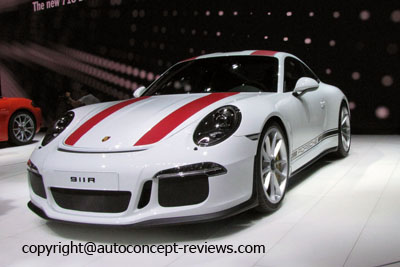 |
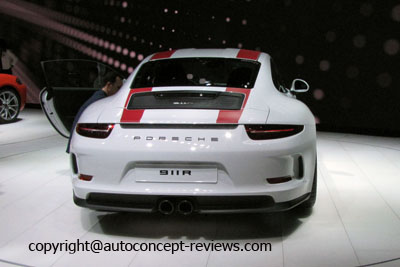 |
|
| |
- Porsche 718 Boxter and Boxter S -Porsche 718 RS60 Spyder 1960
|
|
In the twenty years since its debut, the Porsche Boxster has established itself as the benchmark roadster. At 2016 Geneva Motor Show, a new generation of the mid-engined two-seater was unveiled, powered by a newly-developed range of flat four cylinder ‘boxer’ engines with turbocharging. At the same time, a new designation is introduced; 718 Boxster and 718 Boxster S.
These new models continue the tradition of the Porsche 718 mid-engined sports cars that won numerous races in the 1950s and 1960s, powered by four-cylinder ‘boxer’ engines. Also in exhibit at Geneva was a Porsche 718 RS60 Spyder similar to the one that won the 1960 Sebring 12 Hours with Hans Herrmann and Olivier Gendebien at the wheel.
The launch of the new 718 Boxster represents a return by Porsche to building sports cars with flat four-cylinder ‘boxer’ engines. The addition of a turbocharger significantly boosts torque. The pull of the 2.0-litre engine in the 718 Boxster has increased by nearly a quarter versus the prior model, with 380 Nm of torque (a gain of 100 Nm) available from 1,950 rpm to 4,500 rpm. In the case of the 2.5-litre engine in the 718 Boxster S, this generates 420 Nm (60 Nm more) across a speed range from 1,900 rpm to 4,500 rpm.
Consequently, the new 718 Boxster models sprint even faster. The 718 Boxster – with optional PDK double-clutch automatic transmission and the Sport Chrono Package – sprints from 0 – 62 mph in 4.7 seconds (0.8 seconds quicker). The equivalent 718 Boxster S accomplishes this in 4.2 seconds (0.6 seconds faster). The top speed of the 718 Boxster is 275 km/h (170 mph), and the 718 Boxster S has a top speed of 285 km/h (177 mph).
|
| |
- Spyker Preliator |
Spyker has returned to Geneva today to unveil the worthy successor to the Spyker C8 Aileron, launched right here in 2009, of which the last five units are being assembled in our new production facilities in Coventry, the United Kingdom.
By mounting a supercharger to the Audi V8 engine Spyker has improved the performance of the Spyker C8 Preliator significantly as compared to its predecessor and its exclusivity is warranted since Spyker will produce a mere 50 units.
The “Preliator” name, which means "fighter" or “warrior” in latin, pays tribute to that aviation
heritage: "Fighters" are warplanes as made by Spyker between 1914 and 1918.
|
| |
- Rolls Royce Dawn
|
The Rolls Royce Dawn is propelled by 48 valves direct injection V12 producing 563 hp at 5250 rpm and 780 Nm at 1500 rpm. The 2560 kg (5644 lb.) car is annouced with a top speed of 250 kph (155 mph) and 0-100 kph (0-62 mph) in 5.0 seconds.
|
| |
- Bentley Mulsanne EWB |
Bentley unveiled its new Mulsanne model range, which reaches even greater heights of luxury and performance and sets a new benchmark for rear-seat passenger comfort, at the Geneva Motor Show 2016.
Handcrafted in Crewe, the new range comprises the Mulsanne, the performance-focused Mulsanne Speed and the all-new, ultra-luxurious Mulsanne Extended Wheelbase with its new extended wheelbase variant offering airline-style seats.
|
| |
- Nissan IDS Autonomous Electric Concept
|
At the Tokyo Motor Show 2015, Nissan Motor Co., Ltd. unveiled a concept vehicle that embodies Nissan’s vision of the future of autonomous driving and zero emission EVs: the Nissan IDS Concept. The Nissan IDS was exhibited at Geneva for a European première.
Presenting at the show, Nissan president and CEO Carlos Ghosn said: “Nissan’s forthcoming technologies will revolutionise the relationship between car and driver, and future mobility.”
See Nissan IDS Concept 2015, Autonomous electric vehicle for further details and illustrations.
|
| |
- Honda Clarity Hydrogen Fuel Cell
|
The Clarity Fuel Cell makes its European debut at Geneva, following its global unveil at Tokyo motor show in October last year. Clarity Fuel Cell is the world’s first production fuel cell saloon to house the entire fuel cell powertrain under the bonnet. With a range of up-to 700 km* (435 miles), the Clarity Fuel Cell achieves best-in-class range while its unique packaging allows an interior design to offer seating for five, a first for a fuel cell saloon.
* Honda internal measurement in JC08 mode and use of hydrogen station with pressure of 70MPa
See related article Honda FCV Hydrogen Fuel Cell Concept 2015for further details and illustrations.
|
| |
- Honda NSX
|
Following the announcement of the start of customer sales in the US at Detroit motor show, Honda confirms the first European customer deliveries for the Honda NSX will begin in 2016. The NSX features classic low and wide proportions married to modern and alluring surfacing, an aggressive front design, and rear lights that pay homage to the original NSX. The new hybrid supercar has an all-new mid-mounted DOHC V6 engine with twin turbochargers mated to a specially-developed nine-speed DCT.
See Honda Acura NSX Supercar 2015 for further details and illustrations.
|
| |
- Honda Civic Hatchback Prototype
|
The Civic Hatchback Prototype received its global premiere at Geneva Motor Show, previewing the exterior design of the all-new hatchback model, scheduled for a European launch in early 2017. Produced at Honda of the UK Manufacturing (HUM), the car will be exported to global markets, including the US.
|
| |
- Honda RA272 Formula One 1965
|
Following its 1964 debut, Honda’s Formula 1 team started the 1965 season with fresh ambitions, a new single-seater (RA272) with a redline of 14,000 revs, and a very experienced driver in American Richie Ginther. After finishing 6th twice, the American gave Honda its first victory in Formula 1 at the Autodromo Hermanos Rodriguez in Mexico, in what was only the team’s ninth race. It was obviously the first victory for a Japanese single-seater in the entire history of the Grands Prix, and a wake-up call to more established teams from Europe.
|
| |
- Lexus LF-FC Hydrogen Fuel Cell Concept
|
The visionary Lexus LF-FC (Lexus Future-Flagship Car/Fuel Cell) Concept offers a glimpse of the design and technology under consideration for the company’s future flagship sedan.
Powered by a high-output fuel cell and all-wheel drive incorporating both gesture control and automated driving technologies, the LF-FC Concept underlines Lexus’s commitment to have a fuel cell car within its model range around 2020.
|
| |
- Lexus LC 500h
|
The Lexus LC 500 Hybrid was revealed in March at the Geneva Motor Show.
The LC 500 Hybrid offers exhilarating performance and greater efficiency through the world’s first Multi Stage Hybrid System, the next generation of hybrid powertrains specifically designed for performance vehicles. The system closely aligns engine speed with throttle inputs, while also balancing power with fuel consumption. It also features ‘M’ Mode—the first driver-initiated gear shifts offered on a Lexus full hybrid powertrain—giving drivers the ability to initiate direct and responsive gear shifts for the most sporting and engaging drive yet from a Lexus hybrid.
|
| |
- Maserati Levante SUV
|
Maserati has chosen the 86th Geneva International Motor Show to introduce the first SUV in its hundred-year history: the Levante.
As with many Maseratis from the past, the new car's name is inspired by a wind: the Levante is a warm Mediterranean wind that can change from a light breeze to an irresistible natural force in an instant, mirroring the character of the first Maserati SUV.
The new Maserati SUV is based on the Quattroporte and Ghibli architecture, further evolved and refined to meet the expectations of this market segment, in which Maserati will compete for the first time.
The height-adjustment of the body position particularly useful in off-road driving guarantees ride comfort at the top of the category; when set to the minimum ground clearance, it enables the car to perform at its sporty best.
The Levante is fitted with a 3 litre V6 Twin-Turbo petrol engine with either 350hp or 430hp, and a 275hp 3 litre V6 Turbo Diesel. All engines are combined with the “Q4” intelligent all-wheel drive system - which can transfer torque between the axles instantaneously when required - and an 8-speed automatic gearbox, with integrated Start&Stop System.
In terms of performance, the Levante S (430hp) covers 0-100 km/h in 5.2 seconds, has a top speed of 264 km/h, and provides combined NEDC-cycle consumption and emission figures of 10.9 l/100 km and 253g CO2/km respectively. The Levante (350hp) accelerates from 0 to 100 km/h in 6.0 seconds and achieves a top speed of 251 km/h, with combined cycle consumption and emission figures of 10.7 l/100 km and 249g CO2/km respectively. The Diesel-powered Levante (275hp) covers 0-100 km/h in 6.9 seconds, and has a top speed of 230 km/h, while its combined cycle consumption and emission figures are 7.2 l/100 km and 189g CO2/km respectively.
|
| |
- Mitsubishi eX Concept -Electric compact crossover
|
Mitsubishi Motors Corporation’s eX Concept is a vision for a compact SUV powered by a next generation electric vehicle system.
In terms of design, it evokes the image of a sports crossover blending the elegance of a “shooting brake” with compact SUV lines. The front end is a further interpretation of Mitsubishi Motors’ Dynamic Shield new visual identity. Whether in terms of
exterior design or interior design, eX Concept hints at the direction MMC Design is taking.
Under the skin, eX Concept’s next-generation EV system employs a high-capacity / high-performance battery together with compact high-output electric motors (front & rear) making it lighter and more efficient. With further weight reductions in the vehicle itself, it can provide a cruising range of 400 km.
Installing the drive battery beneath the body has lowered the center of gravity and together with its Twin Motor 4WD.
Further evolutions in MMC’s advanced active safety technology system supports safer and more comfortable driving. In the case of eX Concept, the advanced active safety technology system comprises: Forward Collision Mitigation system (FCM) and Ultrasonic misacceleration Mitigation System (UMS). The scope of these camera and radar-based systems have been expanded to detect pedestrians and bicycles even at night.
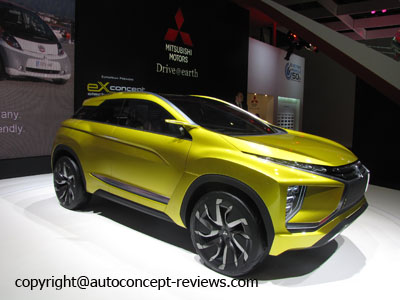 |
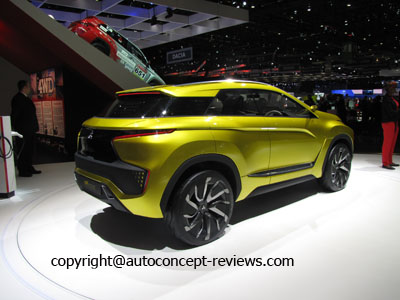 |
|
| |
- Subaru XV Concept
|
Subaru unveiled the Subaru XV Concept previewing the design direction for the next generation of Subaru vehicles, including an all-new XV compact crossover.
The Subaru XV Concept is a design study that embodies Subaru’s next-generation design philosophy, with a solid, robust appearance and raised ground clearance that references the go-anywhere All-Wheel Drive capability of every Subaru vehicle.
At the front the concept features the company’s signature hexagonal grille and ‘hawk-eye’ headlamps. Matt black body cladding – which can shrug off light impacts and scrapes in rural or urban environments – runs from the front bumper, over the wheel arches and side sills, and into the rear bumper.
The rear of the car echoes the same wide, low and highly stable stance portrayed by the front, with powerful shoulders over the matt black-clad rear bumpers which rise to meet the car’s rear combination lamps. The rear lights share the same design motif as the ‘hawk-eye’ headlamps.
|
| |
- Skoda Vision S Plug-in hybrid Concept
|
“Our brand continues to develop at a rapid pace,” said ŠKODA CEO Bernhard Maier. “With the Yeti, ŠKODA has already made a big statement in the compact SUV segment. Our extensive 4×4 expertise is now feeding into an SUV production model above the Yeti. In terms of design, overall package and everyday practicality, the ŠKODA VisionS already provides an insight into our new SUV. The show car also exhibits a variety of future technological advances that are becoming more and more important to our customers and therefore to ŠKODA. This is why we are also working on areas such as electromobility, automated driving and the comprehensive networking of car, driver and passengers with their environment.”
ŠKODA is working at full speed to launch electric production cars: in future, a plug-in-hybrid engine will be available, followed shortly afterwards by a purely electrically powered engine. The ŠKODA VisionS provides a glimpse into the Czech manufacturer’s electric future: with a power output of 165 kW (225 PS), the show car accelerates from zero to 100 km/h in 7.4 seconds and has a top speed of almost 200 km/h. 1.9 litres of petrol is all the car needs to travel 100 km (45 g CO2/km). The ŠKODA VisionS can cover up to 50 km on electric mode alone, and travels up to 1,000 km with both systems combined.
The petrol engine is a 1.4 TSI with 115 kW (156 PS) and 250 Nm of torque. It works alongside an e-motor that provides 40 kW of continuous power and a peak torque of 220 Nm. It is integrated with the engine’s six-speed DSG which transfers the power to the front wheels. A second electric motor with up to 85 kW and 270 Nm of torque drives the rear axle. It works independently from the front-wheel drive, meaning the show car has clever four-wheel drive, which requires no mechanical coupling.
|
| |
- Espera Sbarro Haze Project
|
The name Haze come from the idea of a stealthy figure, that would suddenly appear in the haze at first light, and vanish as fast. The students of the Espera Sbarro School Montbéliard completed this prototype from the drawing board to a fully functional vehicle. The Haze is based on a multi-tubular steel frame and is powered by a 2.200 cc 5 cylinder 300 hp Turbo engine with a five speed manual gearbox propulsing the rear wheels. The body is made of composite material. Weight is 900 kg.
|
| |
- Espera Sbarro Miglia Project
|
This project was completed by the students of the Espera Sbarro School Montbéliard inspired by the famous Italian race Milli Miglia. The car has a chassis made of steel tubes. The propulsion to the rear wheels is by a Porsche 4.700 cc 310 hp V8 engine with automatic transmission.
|
| |
- Sbarro Ginevra 2016
|
The famous designer Franco Sbarro completed this one-off roadster at the request of a customer with a Ferrari 550 hp Ferrari Maranello V12 propulsing the rear wheels. The low Plexi windscreen oblige the use of helmets which are located in a holder between the headrests. The luggage space is designed as a drawer.
|
| |
- Rinspeed Etos Innovation Demonstrator - personal autopilot and drone
|
The Rinspeed Etos was first introduced at CES in Las Vegas in 2015. This hybrid sports car is a "self-driving car" with folding and retractable steering wheel. A total of eight HD exterior cameras visually monitor the vehicle surroundings completly. People and objects in the entire vehicle surroundings are detected and tracked automatically.
The Rinspeed Etos is based on a BMW i8. The Etos is fitted with an on-board DJI drone complete with landing platform on the rear deck. The drone is capable of providing some very useful services. For example, it can quickly act like a UFO, shooting a selfie of the ride in the Etos on favorite route and streaming it live to friends. It can also pick up a bouquet of flowers ordered on the way home.
|
| |
- Lotus Evora Sport 410
|
Total production of the Lotus Evora Sport 410 is limited to one-hundred and fifty vehicles per year. Following on from the recently announced Elise Cup 250, and the Exige Sport 350, Lotus’ famous Lightweight Laboratory has been hard at work cutting the weight of the Evora 400 by a massive 70kg. With a host of high-performance carbon fibre components as standard, and sharing the 410 hp supercharged engine with the track-bred 3-Eleven, the Lotus Evora Sport 410 clocks 0-60 in 3.9 seconds on its way to a top speed of 186mph.
see related article Lotus Evora 2008.
|
| |
- Lotus Elise Cup 250
|
The global production run of the Elise Cup 250 will be limited to two-hundred vehicles per year.
Proving that less is more, Lotus’ high performance Cup version of the famous Elise has shed 21 kg and gained 26 hp. Weighing in at 931 kg, and capable of 0-60 mph in 3.9 seconds, the Elise Cup 250 is the fastest road-going Lotus Elise ever with 154 mph claimed top speed.
|
| |
- Lotus 3 Eleven
|
Heralding a new generation of Lotus high performance sports cars, the Lotus 3-Eleven was first unveiled at the 2015 Goodwood Festival of Speed. The Lotus 3-Eleven now exhibited at Geneva is the company’s quickest and most expensive series production car ever.
See Lotus 3 Eleven 2015 for further details and illustrations.
|
| |
- Citroen E Mehari and E-Mehari by Courrège
|
Some 50 years after Méhari appeared on the scene in May 1968, two visionary french Brands teamed up on an exciting project: Citroën E-MEHARI styled by Courrèges concept car. It’s based on Citroën E-MEHARI, unveiled in December 2015, a car inspired by its no less revolutionary forebear. Citroën E-MEHARI is an all-electric four-seater cabriolet. It’s fun, modern, environment-friendly, and eminently true to the values of creativity, freedom and optimism that Citroën has been advancing since nearly a century ago.
Citroën E-MEHARI styled by Courrèges concept car harnesses E-MEHARI all-electric technology using LMP® (lithium metal polymer) batteries developed by the French engineering expertise of the Bolloré group. Top speed reaches 110 km/h and urban-cycle vehicle range 200 km. Full battery recharge takes 8 hours at a dedicated 16 A charging station (home station or public station such as Autolib) or 13 hours from a standard 10 A domestic power outlet.
|
| |
-Bee Bee XS
|
The Bee Bee XS is an electric leisure automobile intended for use in tourist attraction parks or on beaches. This original vision of tourist car has an aluminium chassis structure, proposes four seats and four optional doors. It uses a Lithium Ion battery allowing a maximum speed of 90 km/h with a range of 80 to 90 km depending on battery size and operating conditions. The ABS plastic body can be hosed down inside and outside.
|
| |
-Infiniti Q60
|
Making its European premiere at the 2016 Geneva International Motor Show, the new Infiniti Q60 is a premium sports coupe that combines expressive design with exhilarating performance and dynamics.
The Q60’s bold exterior – lower and wider than predecessors – expresses a powerful elegance through its daring proportions and taut, muscular lines. Dynamic enhancements, including an all-new lightweight and sophisticated 3.0-liter 400 hp V6 twin-turbo engine, together with new adaptive steering and digital suspension system, result in a premium sports coupe designed and engineered to perform.
|
| |
-Abarth 124 Spyder and 124 Rally prototype
|
Along with the Abarth 124 spider, the first prototype of the 124 rally also has a surprise début. For the first time, the road car and the racing car have been developed and unveiled together.
The Abarth 124 spider is equipped with a powerful, reliable four-cylinder 1.4-litre MultiAir Turbo engine. It delivers 170 HP (about 124 HP per litre) and 250 Nm of torque. It has a top speed of 230 km/h and goes from 0 to 100 km/h in 6.8-seconds. Furthermore, the sound of engine really matters in an Abarth car, so the Record Monza exhaust come equipped as standard, generating a beautiful growling sound.
The new Abarth 124 rally is a combination of pure technology and performance born from the experience of the Abarth Racing Team to bring back the Scorpion to the most glorious and demanding rally tracks, from the sticky sunburnt tarmac to the more slippery ice surfaces.
Under the bonnet, it fits the 1800 cm3 "bialbero" turbocharged direct injection engine. Thanks to the different selectable mappings, it provides power up to 300 HP at 6500 rpm and optimum torque curve.
Homologation in the FIA R-GT category has required structural reinforcements to guarantee even greater stress resistance and the highest safety standards for the crew, and the body now has a safety roll cage.
|
| |
|
Text & Photos by Paul DAMIENS, Newspress and Manufacturers |
|








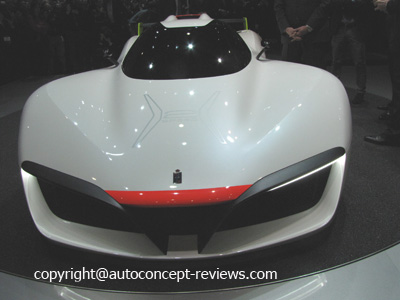
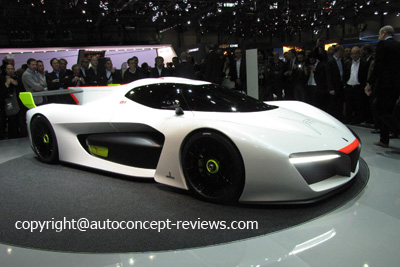
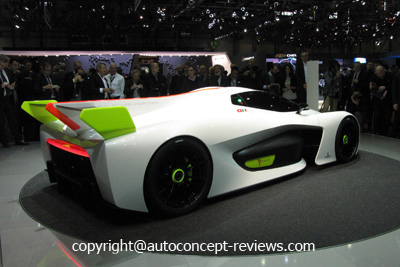
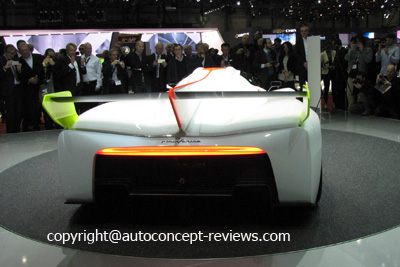
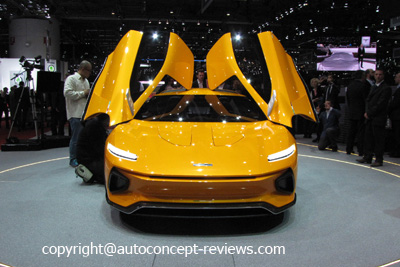
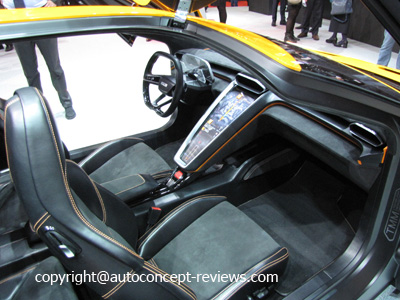
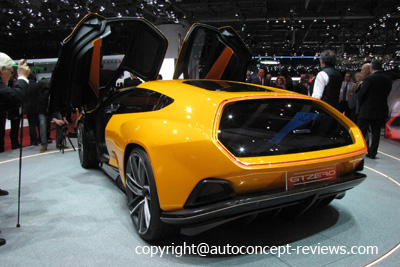
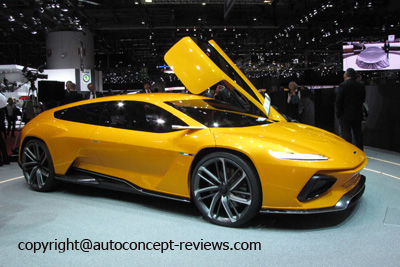
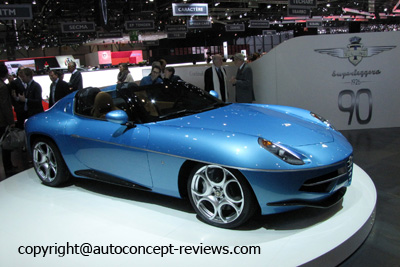
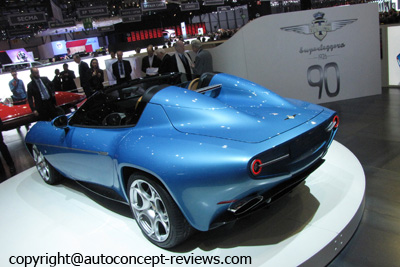
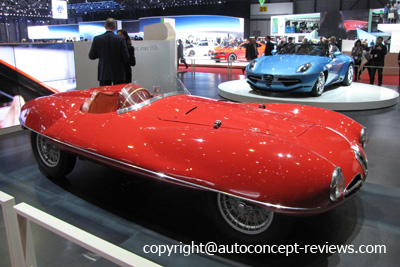
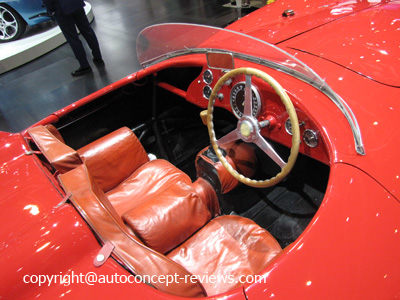
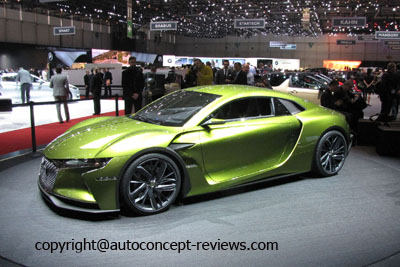
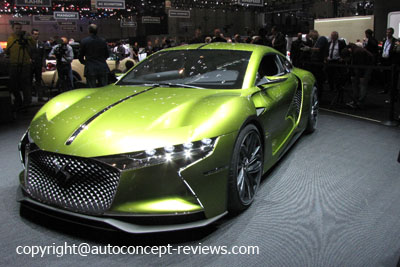
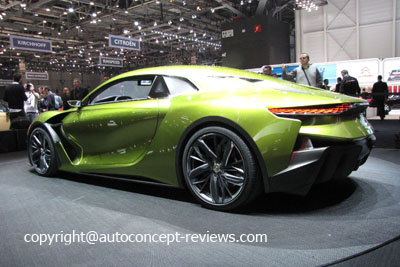
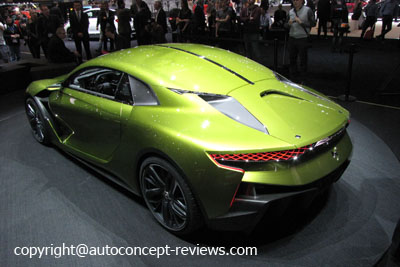
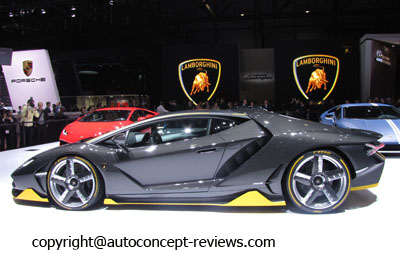
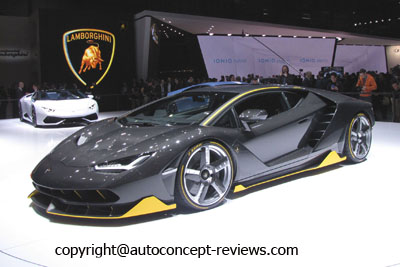
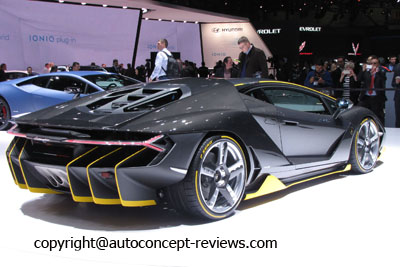
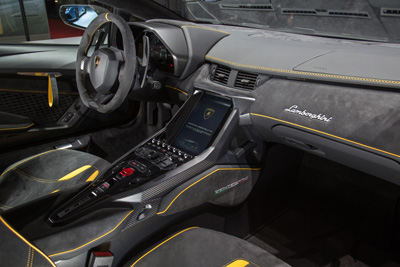

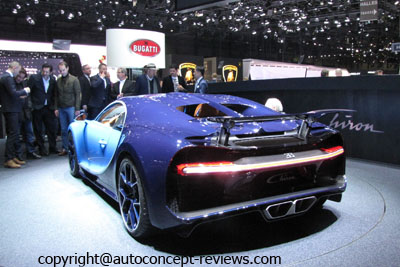
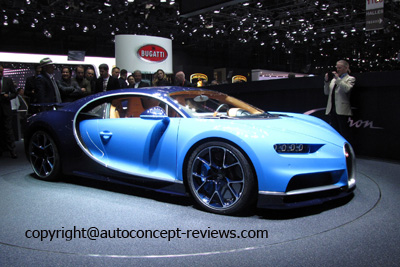
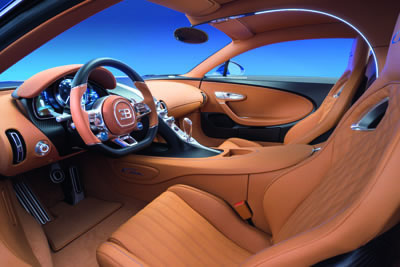
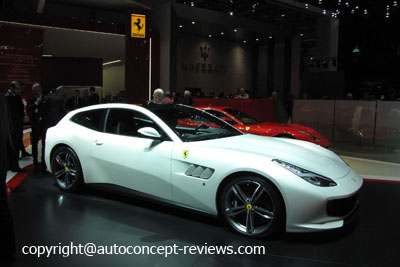
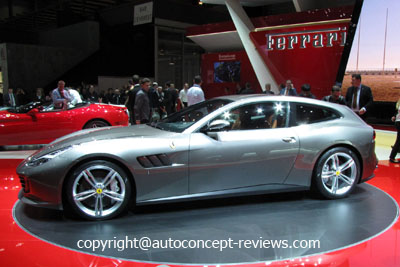
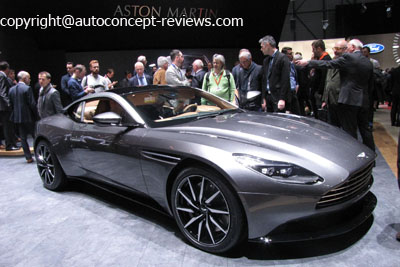
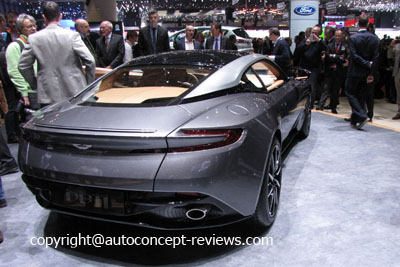
.jpg)
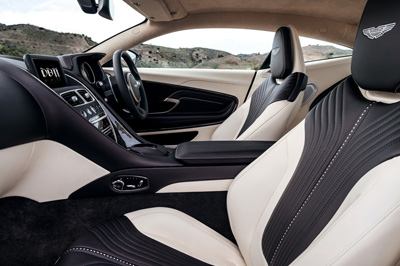
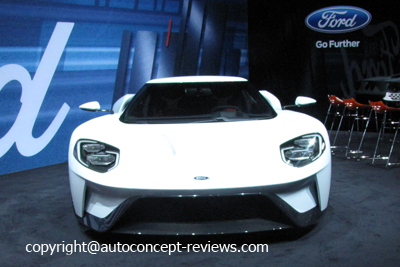
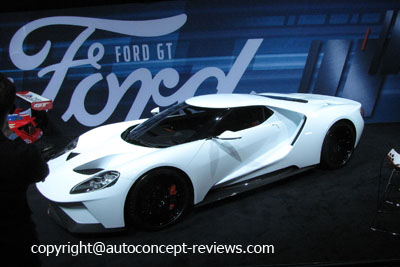
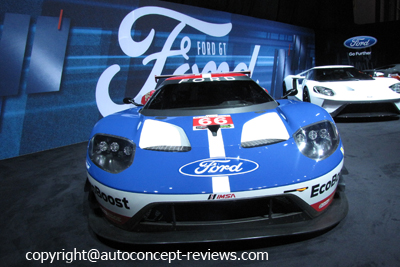
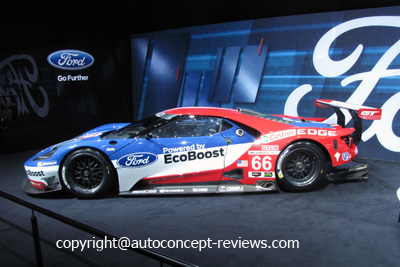
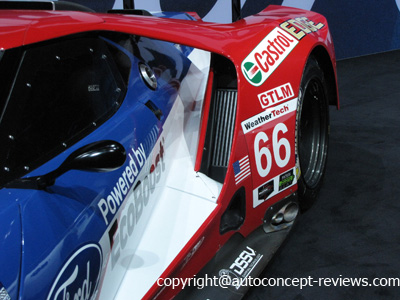
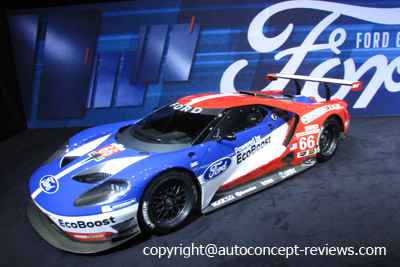
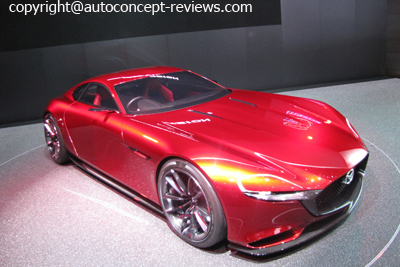
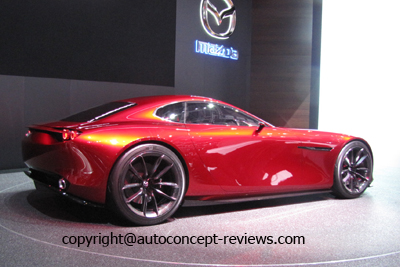
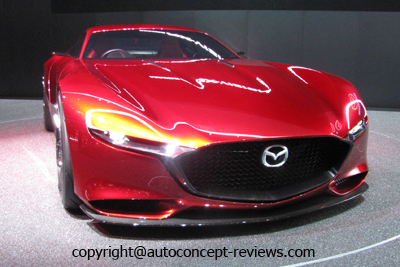
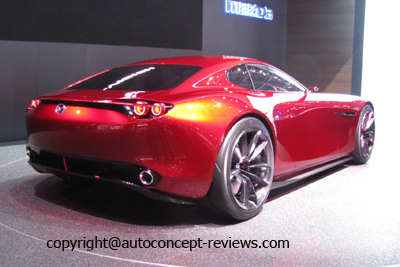




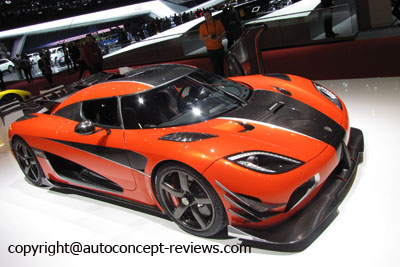
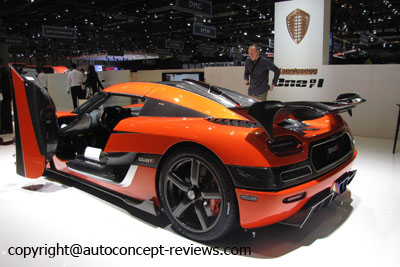
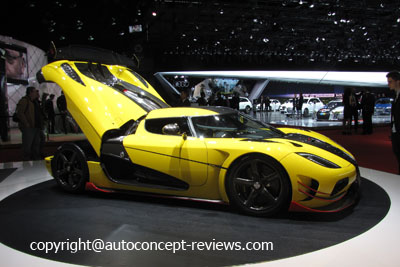
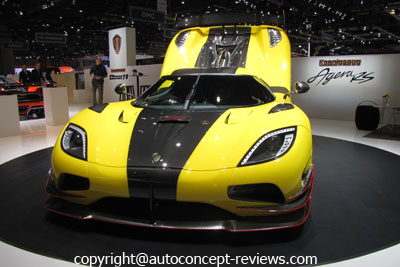
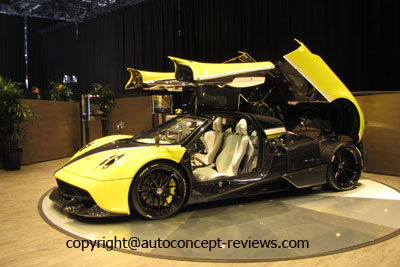
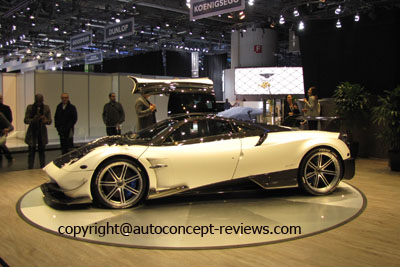
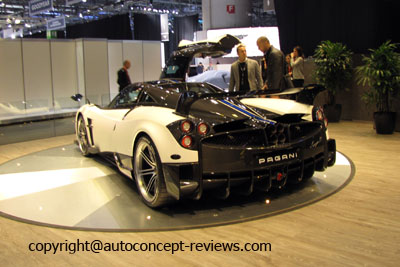
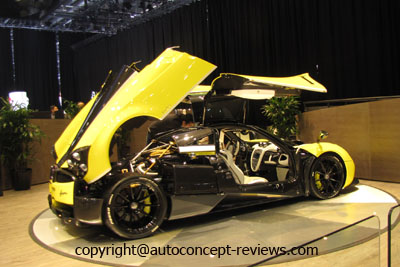
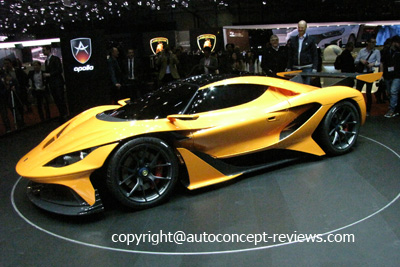
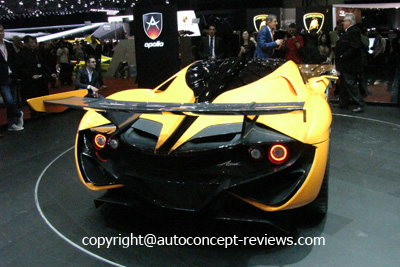
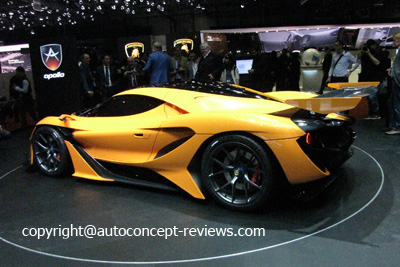
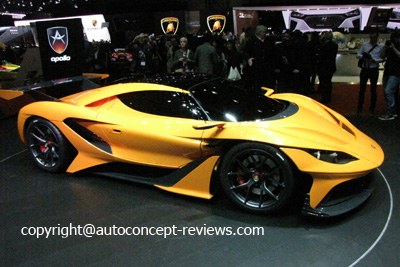
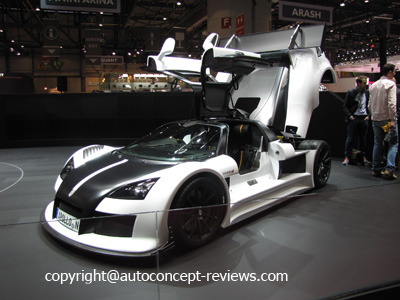
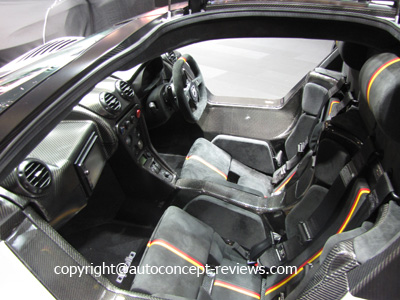
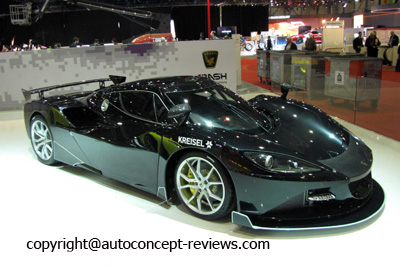
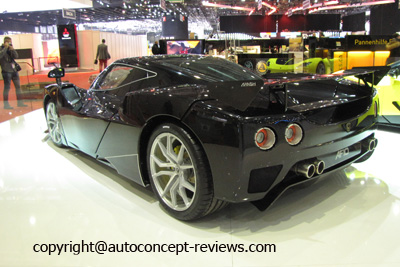
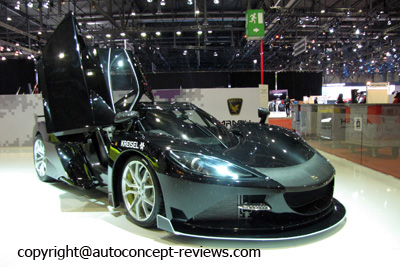
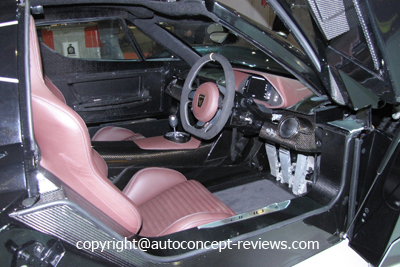


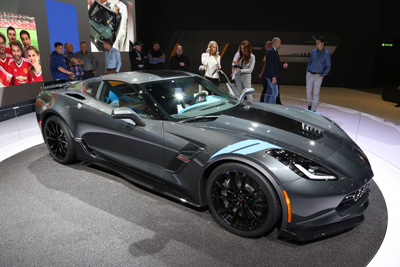
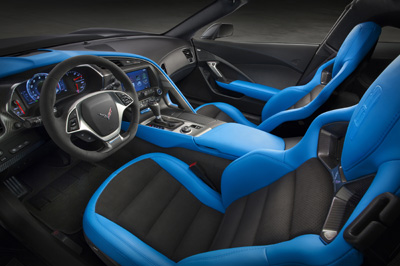

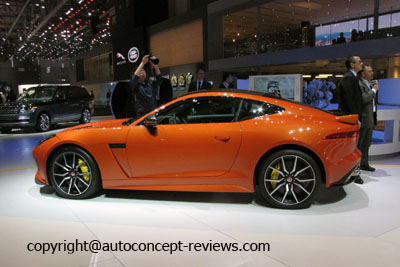

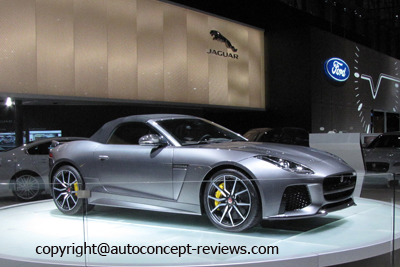
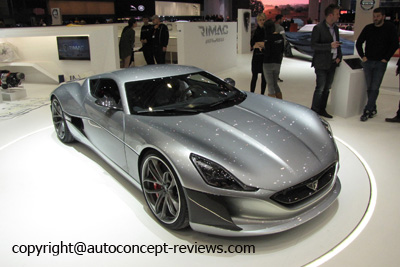
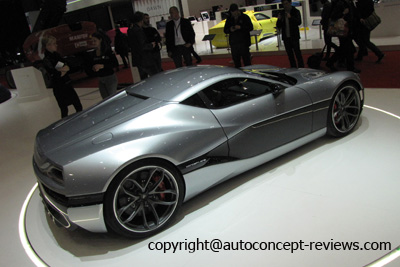
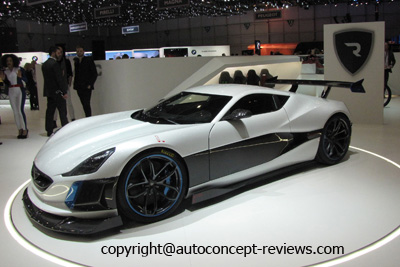
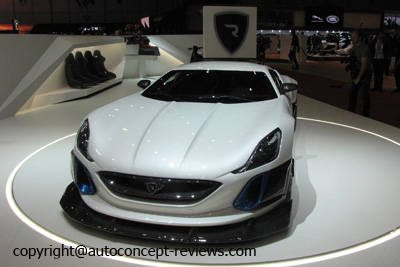
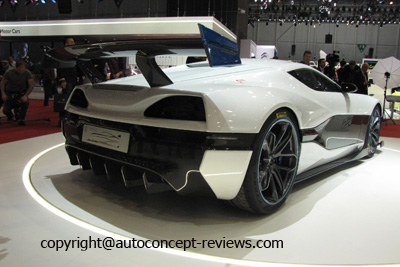
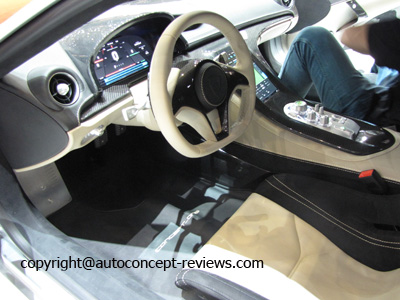
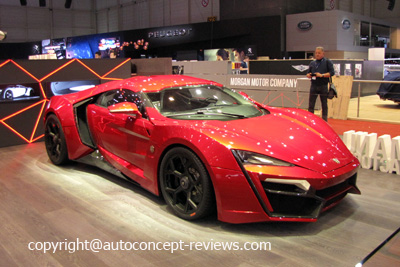
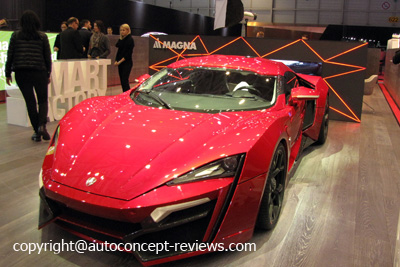
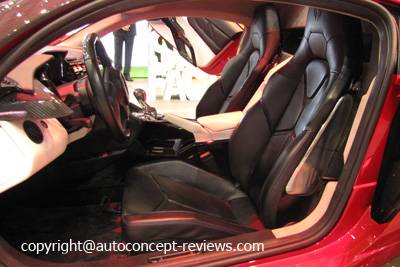
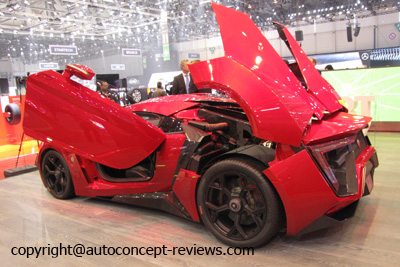
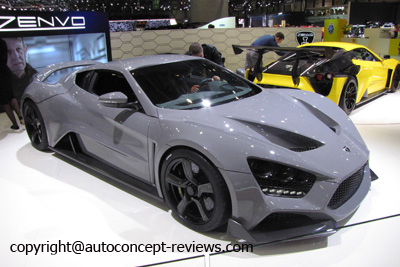
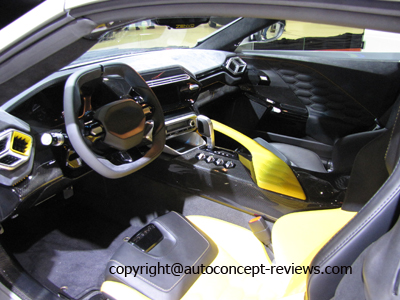
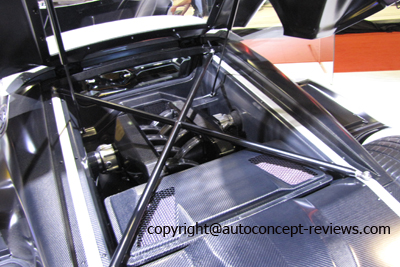
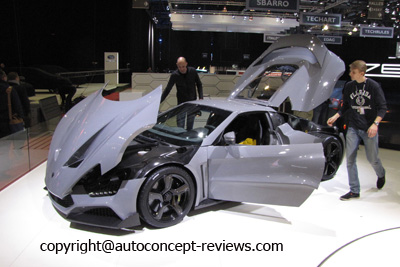
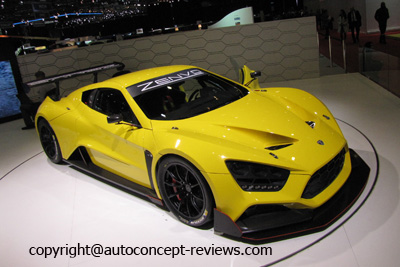
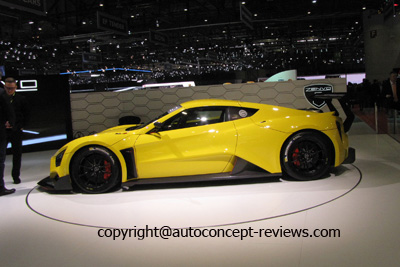
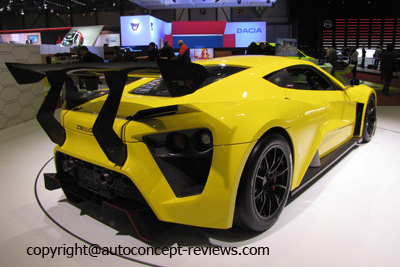
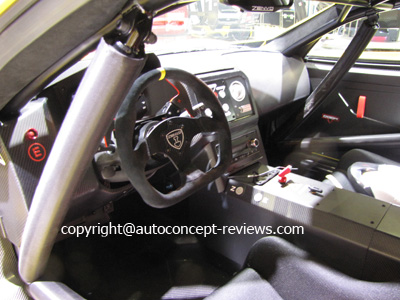
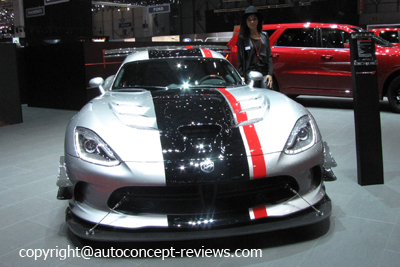
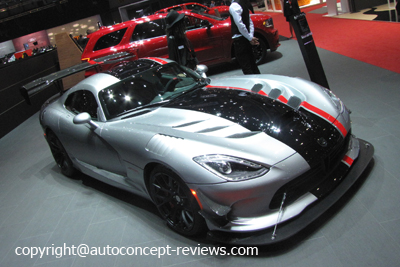
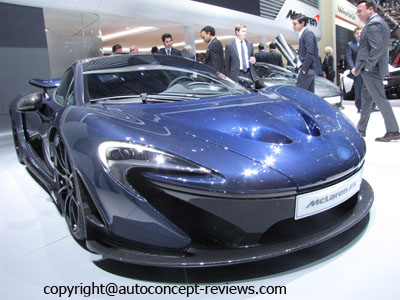
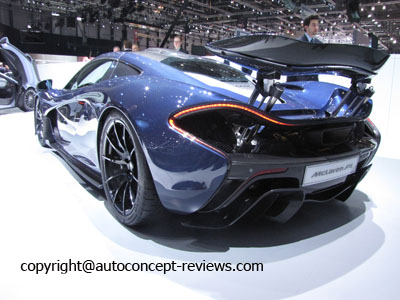
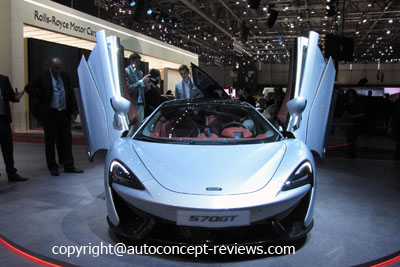
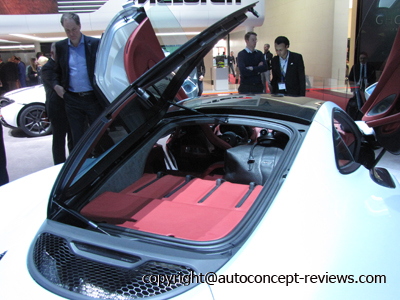

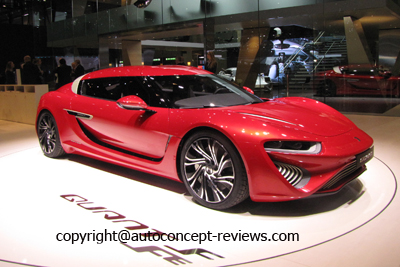


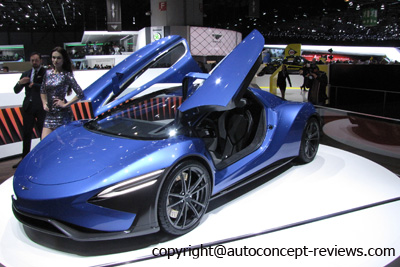
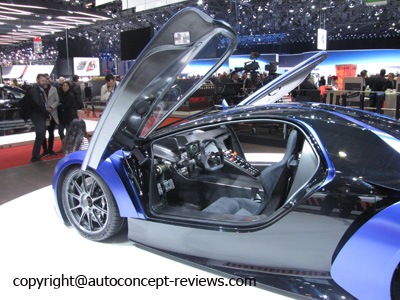
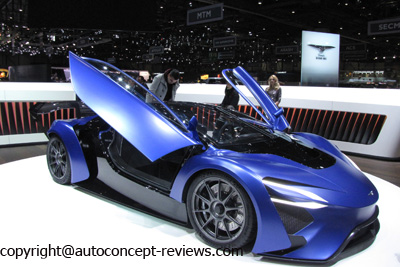
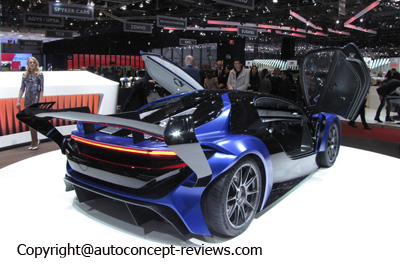
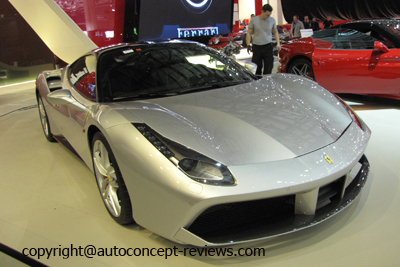
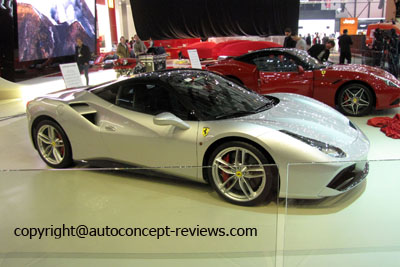
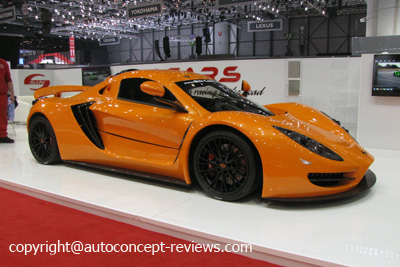
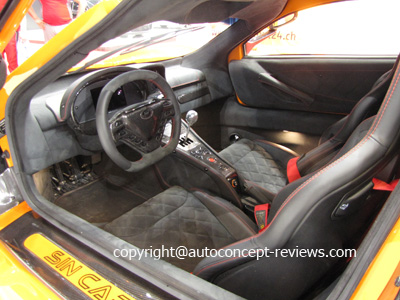
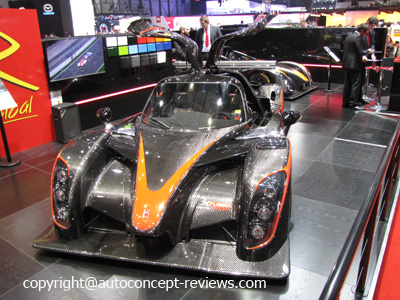
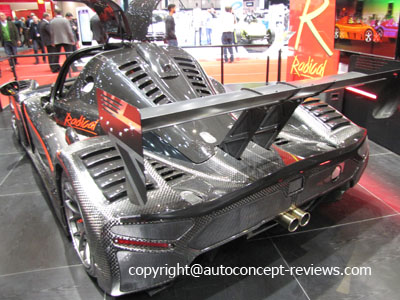
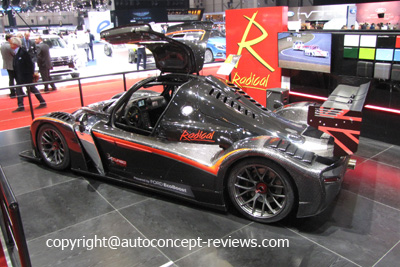
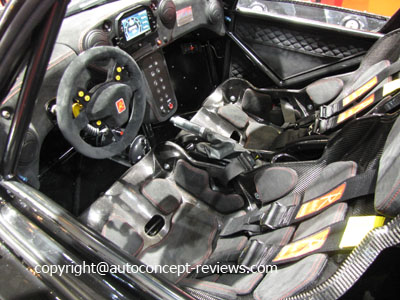
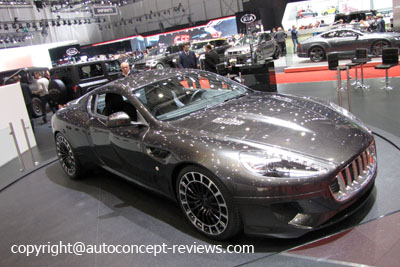
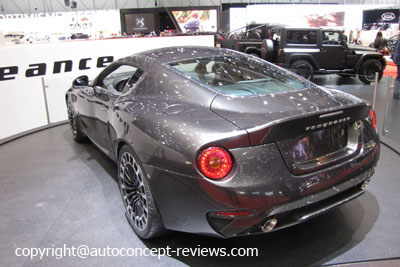
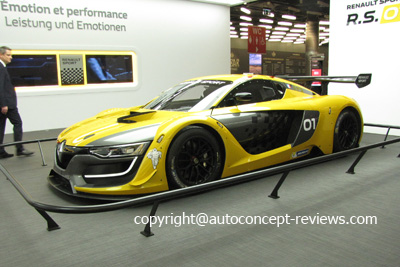
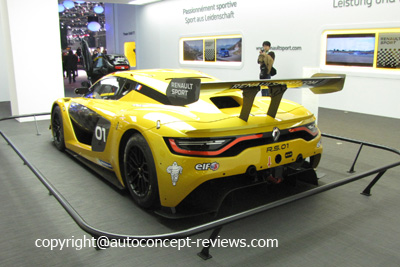
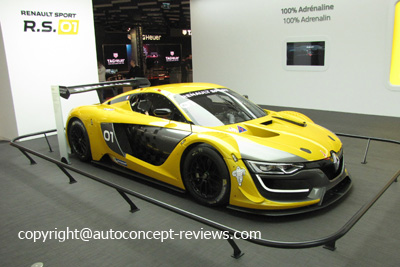
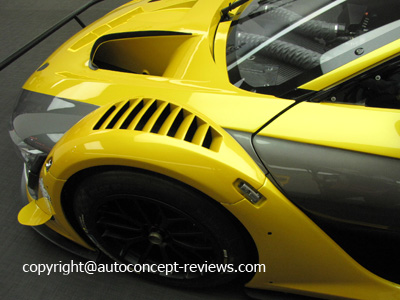
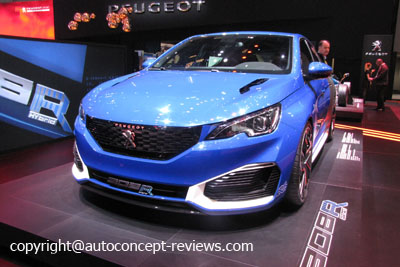
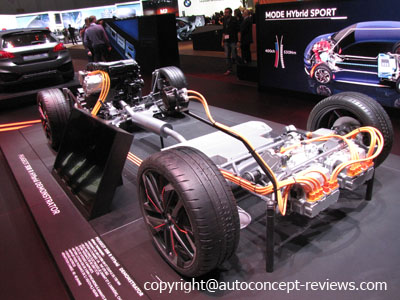
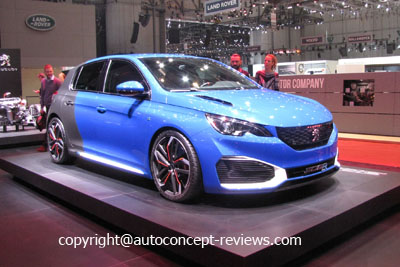
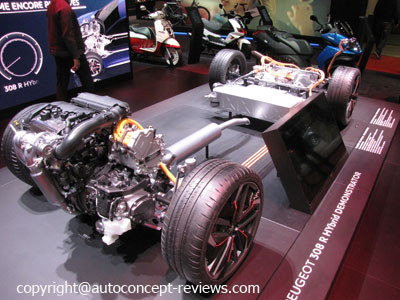
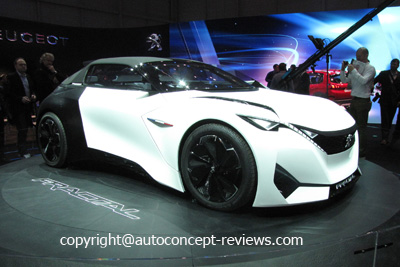
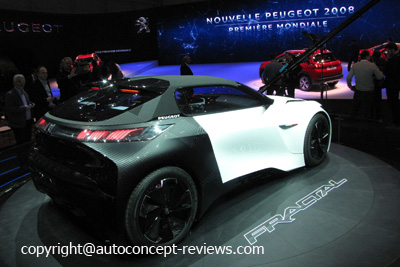

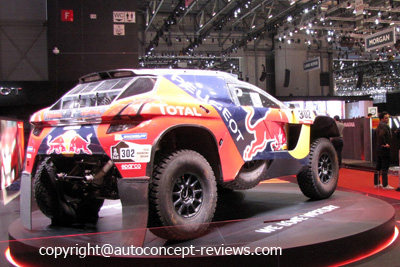

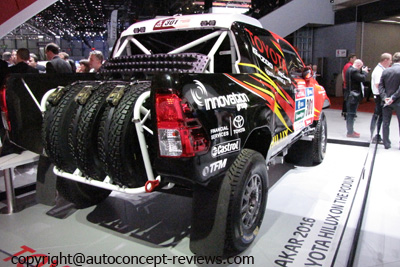
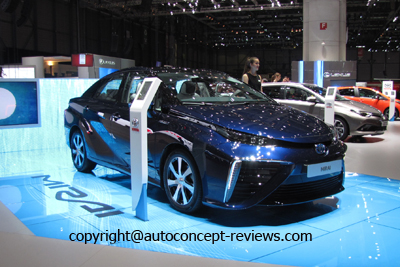
.jpg)
